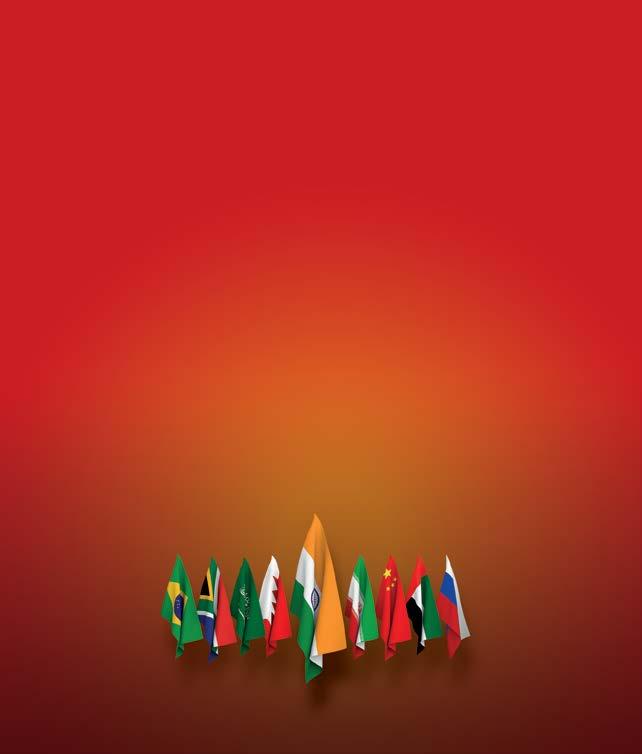









15 AUGUST FOCUS
AUGUST 2025














15 AUGUST FOCUS
AUGUST 2025





As India rises in the geopolitical grid and seeks to balance its friendship with the US and the recent tariff threats, what does that mean to Indo-GCC economic ties?

Indian Ambassador Vinod Jacob talks of India’s progress, the Nari Shakti quotient and the road ahead for IndiaBahrain relations

In the hard terrain of the New York restaurant scene, Tamilian chef Vijay Kumar of Semma, has made history by serving up his grandmother and mother’s recipes and winning accolades.

42


25 66 72 44 09 AN AUGUST 15 REPORT CARD
Two Indian Navy officers have made history with the first-ever doublehanded circumnavigation of the world by Indian women.
ALL THE MAGIC OF THE MELA
While there are hundreds of religious events in India, we bring you a curated list of festivals where the spiritual leads to the cultural and gives visitors an immersive and unforgettable experience. 17
Whether bringing ancient healing wisdom to Bahrain or mapping logistics routes, setting crosswords or building a global community, the Kingdom’s women are doing it all. Here are seven representative stalwarts who are holding up half the sky.

Celebrities crowded the 25th anniversary show of Lakme Fashion Week this year, and while designers had a lot of frills and sweeping lines for the women, it was the dilplay of virtuoso imagination in menswear that stole the show.


We are at that point in our tryst with AI that we have been before with every technological breakthrough – I think the best description for it is “stage-fright”. We are on stage with the imagined monster, in front of the audience made up of competitors and different generations who are working with AI at their own levels of acceptance. Can we afford to wish away the development?
It is a question that people before us and even our own generation has faced for innovations as simple as the electric typewriter, the word processor and the laptop. Why, even Bill Gates famously got it wrong when he said that 640KB is enough memory for anybody – uttered in the age of the 8-bit computer. While Gates has repeatedly refuted this quote, it is a convenient shorthand for a common misstep in predicting the future of technology.
I am pondering over AI because in preparing my articles for the columns that I write and in the editorial creation of Salaam Bahrain, we often find that when we post a query on the ‘net, we get an AI prompt in the form of a full article. Of course, we try to squeeze the meaning out of the AI post and research for more relevant information. But the true authenticity of an article lies in actually talking to people and connecting their expertise or experience to the subject.
As a diaspora publication, this means that we seek out the expat experience and highlight its triumphs and challenges. In this special issue, we have moved beyond the Indian Independence Day format of showcasing the same companies and CEOs to talk about an oft-overlooked aspect: the contribution of women in building commercial and cultural links between India and Bahrain, in nurturing the community and energizing the network that sustains it. All the lady achievers we have interviewed have brought a particular aspect of India alive in Bahrain, be it ancient Ayurveda or a global community network of Indian-origin persons or a unique affinity to mine their colonial language for word puzzles!
This issue salutes the bond of brotherly affection and respect between Indians and Bahrainis. May our friendship always stay bright.







From
the Chairman, Vice Chairman, Managing Director, Principal, Staff, Students & Parents











LuLu Hypermarket recently celebrated and drew delicious attention to its vast global supply-chain network with a flavoursome festival called “The World In Every Aisle”. Diplomats from thirteen countries made their presence felt especially in the fruit and veg aisle where special produce of each country was held aloft. Ambassadors and VIP guests placed their hands on a giant globe which lit up to mark “At Lulu Hypermarket, it has always been our core belief that a global supply chain will help to bring the best ingredients to the world. Our global supply chain spans over 30 countries with award-winning centres in New York, Birmingham U.K., Milan in Italy and in Asia across India, Sri Lanka and Indonesia” said Mr. Juzer Rupawala, Director – Retail of LuLu Group, “These supply and logistics centres help us to source the best products, our investment in state-of-the-art equipment and I.T. means that they reach our aisles in the freshest condition and that wastage is minimal throughout the chain. It is a testament to our commitment to our customers as well as the key role that the LuLu Group plays in global food security, with its over 250 stores around the world.”The Hypermarket also supports local food trends and initiatives which give shoppers a snapshot of the local foodpreneur culture and culinary scene.
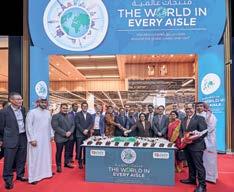

The Bahrain Odiya community, led by the tireless Arunkumar and Sunita Praharaj, held their annual Rath Yathra in Manama, where the images of Lord Jagannath and his sibling gods were taken out in a joyful procession. "We are indeed blessed to be able to celebrate this auspicious festival with such open-ness in the harmonious Kingdom of Bahrain," Praharaj said.




It is a tradition in Bahrain to interview the Indian Ambassador for August 15 and get a clear understanding of how India is progressing, the promises made, kept and developing. This year, since ‘Viksit Bharat’ was the template of the 79th Indian Independence Day celebrations, we wanted to see how the progress and plans for a brighter India included Indian women. In a wide-ranging talk with Salaam Bahrain Editor Meera Ravi, Ambassador Vinod Jacob spoke eloquently about the other vision of the Indian government: Nari Shakti - woman power and how it is shaping India and its role in the diaspora too.
Here are important excerpts. For full details, please visit our social media channels (Facebook: Salaam Bahrain and Instagram: salaam_bahrain) where we have released three separate videos of this interview covering different topics.
“As we prepare for the 79th Independence Day of India, it is timely to look back at the achievements of the Indian women who have contributed to the India story. On a conceptual level, it's very important to remember that we have shifted through three stages in terms of women's roles. In the first stage, the government focused on women's welfare and around 1970s, women’s participation in Indian human rights development became important, because women's rights were seen as human rights.
Today, the focus is not only on welfare and women's rights but also on supporting women as equal partners in society, especially in the economy. And I think that's where


India has done an excellent job. If you take a look at the statistics, just a few weeks back, the World Bank announced that India had broken into the Top Five in terms of manufacturing contributions with USD 781 billion. Clearly, that wouldn't have been possible without the active participation of women in the economic space.
Now when we look at services, we are talking about a steady rise in economic contribution over the last 20 years or so. And obviously this growth is coming from the women.
As for women in the public space, both the 2019 and 2024 general elections were the largest elections in the world and the number of women voters exceeded male voters. And the Women’s Reservation Bill, that was passed in 2023, aims to bring gender parity into the political domain.
(SB Note: This Bill seeks to reserve 33% of seats in Lok Sabha and state Assemblies for women, and will come into effect in the 2029 General Elections.)
When we look at the boardroom, the participation of women in the corporate boards has now increased to almost 20 percent from around 2 percent around 15-20 years back. So, these are all substantial indications of the active role that Indian women are playing. Women have also played an important role in elevating India’s sports performances - till Neeraj Chopra brought us his javelin gold medal, most of the medals in Olympics came from Indian women.
“Specifically, when we look at India-Bahrain, I want to highlight a few important developments - we had a three-star general from the armed forces visit here in July last year to have interactions with her counterpart, especially in medical field. We also had lady pilots and lady technicians coming here as part of the Sarang helicopter team in November last year.
Likewise, in October last year, when the first training squadron of the Indian Navy comprising INS Teer and ICGS Veera had come, there were a lot of trainee officers, there were a lot of officers, women officers, trainee officers.”
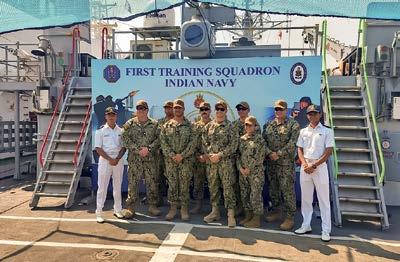
Indian women are increasingly playing a key role in the defense forces as seen when the INS Tir and ICGS Veera docked in Bahrain
“Indian women have always been acknowledged as the pioneering professionals especially in the development of GCC health and education fields. In the more contemporary context, they have been contributing to the economic prosperity of the Kingdom of Bahrain. And I would encourage them to continue to do so.
In my interactions with ministers from the Kingdom of Bahrain, with the leadership and other interlocutors in the government and outside of the government, they are highly appreciative of the ability of Indian women to actively integrate themselves with the society, especially the economic as well as the social spheres.
When we (the embassy) engage with women, they bring a sense of purpose to contributing to every interaction. We see it in the open house, we see in the responses that they give when we reach out to the Indian community to amplify a message with respect to India's growth story. And I think they have done exceptionally well.
In fact, as Salaam Bahrain pointed out, Indian women were the first to contribute to the shaping of modern women's perspective in the region because the Indian Ladies Association in Bahrain is the oldest expat women's group in the entire GCC. I totally endorse their role – the ILA has been doing very good work, especially with their focus on the underprivileged and the on children with special needs.”
India's approach is ‘Vasudaiva Kudumbakam’ - the world is one family. If you recall, during the Indian presidency of the G20 in 2023, we had focused on ‘One World, One Earth and One Future’. Our approach is to take every region of the world together.
We are way beyond all G20 countries in achieving our targets on combating climate change and we are going to host COP-33 in 2028.
As you know, during our G20 presidency, Africa became a member of the G20. And this shows a commitment to the ideals that have always united India and Africa. The development experiences that are common to both India and Africa are being utilised through various mechanisms for instance, the International Solar Alliance, in which Bahrain is also a partner.
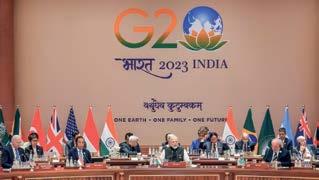
Now, you talked about South Asia which is a developmental partner. For instance, when I was Deputy High Commissioner in Sri Lanka my portfolio on the development side was USD 600 million. So, we were doing development projects all across the island. And then coincidentally when I was there and when Sri Lanka decided to seek IMF support, we were able to use our experience of 1991 to work with Sri Lanka through a USD 4 billion assistance package, including a USD 1 billion line of credit for essentials. So, for around a year, my portfolio was USD 1.6 billion!
We are also promoting cooperation in humanitarian affairs. We are also promoting cooperation in other areas like dealing with disaster management etc. So, these are all natural convergences that we have with countries in South Asia as well as Africa.
These are ways in which New India is engaging with the Global South. This was then subsequently replicated even in the Maldives.
Over the last two and a half decades, we have seen a substantial transformation of India, not only as an economy, but also as a society and as a development partner. Some of our strengths in space, science and technology, in infrastructure development, in the financial services, etc., are quite useful for developing partnerships with countries around the world and also international organisations.
For instance, our engagement with the World Bank and the IMF, our engagement with the United Nations for whom we are the largest troopcontributing country. That's a fact that many people know. But most people forget the fact that India is also the largest equipment-contributing country to the United Nations Peacekeeping Force.
So in terms of people, in terms of assets, and also in terms of time, Indian foreign policy is undergoing a churn for the better under the leadership of the Prime Minister, who has very clearly set out a lot of doctrines.
For instance, India’s doctrine of Mahasagar or "Mutual and Holistic Advancement for Security and Growth Across Regions” is the result of the emphasis that Prime Minister Modi puts on the

Global South. We are also building our network of influence in Africa and Latin America - these are growth regions of the world. And therefore, it gets personified in different personalities, in different entities. We have created structures for that, International Solar Alliance, CVRI.
And who carries this message? The Prime Minister gives the message, he carries the message, and this is amplified by our most active, erudite, exceptionally talented, highly intellectual External Affairs Minister, Dr. S. Jaishankar. In fact, this was an important point of discussion when Dr. Jaishankar visited in December last year. The response we got from the Bahraini side was heartening. They are truly appreciative of the Indian diaspora's contribution to the economic prosperity of the Kingdom of Bahrain.
They also appreciate the Indian position on various issues related to the West Asia. You would have seen in the joint statement that we supported King Hamad's call for a Middle East peace conference.
Speaking about the West Asian neighbourhood, which includes Bahrain, we have benefited greatly from Prime Minister Modi's interest and understanding of how important this region is to growing modern India - not just as a partner in the energy sector, but also because one of the largest diaspora clusters is in this region.
When we come to terrorism, zero tolerance to terrorism has been an article of faith for Indian foreign policy for a long period of time. Most recently, the US government designated the TRF as a terrorist organisation associated with the Lashkar-e-Tayyaba (after conclusive and persistent proof shared by India).
In terms of the fight against piracy around the world, the Indian Navy, Indian Coast Guard has been actively contributing. In the fight against piracy, we have led for the last 10 -15 years, you would have recently heard of Indian naval ships dealing with these challenges in the GCC region. That was one of the highlights of our Combined Task Force participation, which was the first such participation which took place from January to June of this year under the Combined Maritime Forces.
In respect to Palestine, I would like to say that we have a deep and long-standing development partnership with them. As you know, India's position has historically been in support for the two-state solution. We want dialogue to resolve the matters.
According to the most recent data, India has given almost $500 million in support to Palestine over the last 30-40 years through budgetary support, through development partnerships like building hospitals, schools and other infrastructure and also training and scholarship opportunities to Palestinian children. A few months back, we contributed $5 million – so, almost half a billion US Dollars support we have extended to Palestine in the last few decades.
Starting from April 1, we have reduced all our passport, visa and consular fee services by almost 6%. I have been working on it with my team for a few months and we have succeeded in that. It leads to substantial savings whenever you avail of these services.
Second, in early July, we managed to get the electronic visa system launched for Bahraini nationals. I have been working on it since the time I came here and now there are nine categories of electronic visas available for Bahrainis to travel to India - as tourists, for business, conferences, students, student dependents, medical, medical attendant, AYUSH and AYUSH attendant. I encourage all Indians to make use of the benefits provided by the downward reduction of passport and consular services and I encourage all Bahraini friends to make use of the electronic visa facility in addition to the fact that visa fees have come down by 6%.
We have broken through the top five in manufacturing and also as the type of society that we are. Quite apart from women's participation, I also want to mention to you that in the most recent assessment by international organisations, in the Gini coefficient indicator, which shows what type of society you are, whether equal society or unequal, India has got a score of 25.5%, which makes it the fourth most equal society in the world. That's quite substantial. Equally, when you look at the pace at which we have achieved social security protection, this year around 65% of the Indian population has access to full social security protection. That translates into almost 940 million people. So, we are providing security and growth opportunities across regions and across different sectors.
If you take the Indian investment, since the state visit of Prime Minister Narendra Modi in August 2019, by his visit he gave a clear indication of India's support for Bahraini economy. Since then, we have seen a 45% jump in the Indian investment into Bahrain. As on date, total two-way investment stands at USD 2.1 billion and Indian investment has reached 1.9 billion US dollars. This is in different spheres like financial services, healthcare, education, etc. Now that is one aspect.
If you take for instance the last quarter, Indian investment into Bahrain was almost USD 300 million. Then when we look at trade, last year bilateral trade was USD 1.64 billion. And interestingly, the trade is really balanced. In fact, last year, Bahrain had a surplus, USD 50 million surplus.
During the visit of Dr S Jaishankar in December last year, he came for the fourth High Joint Commission meeting with his Bahraini counterpart Dr Abdul Latif bin Rashid Al Zayani. They agreed to take this relationship forward and especially on the trade and investment and we have established a joint working group on trade and investment. We are also doing it in the context of GCC. As you know, India-GCC dialogue has already started and we hope that we will be able to take this relationship forward.
What I would like to tell my Bahraini friends is that, you look at the world, growth is around 3%. India's growth is expected to be 7.5%. That means, we provide now at least a 5% growth opportunity for any country in this region.
And when we are talking about economic growth, it's been quite substantial. For instance, when we had our first interview in 2024, India was the fifth largest economy in the world. Today, we are seeing India has already become the fourth largest economy in the world. Maybe in another 17-18 months, we will become the third largest economy in the world.
Looking to the future in the slightly longer term, we are working on in three specific areas. One is in the political consultations - we are looking forward to exchange of visits, ministerial visits as well as high level visits.
We also want to enhance collaboration in regional and international issues. I want to take this opportunity to congratulate Bahrain on joining the UN Security Council as a nonpermanent member from 2026 to 2027.
India will always support Bahraini government in all their initiatives on the UN Security Council. We are very close partners in the UN and that is part of our political consultations.
The second is, of course, in the area of trade, investment and economy.
We have established a joint working group and we want to have a more detailed engagement. We have some downsides to the relationship like anti-dumping duties which have to be lifted, countervailing measures, etc.
We will discuss all of that and take the relationship forward in that.
Third is mainly the people-to-people engagement and we have many plans for the future. In these three baskets, we have lined up a few things in the next one year or so.
The new Nissan Magnite is a made-in-India SUV that’s exciting a lot of attention for ef cient, mid-range cars in Bahrain.

The new Nissan Magnite which was launched in Bahrain in summer this year, represents Nissan’s philosophy of One Car, One World. It's a subcompact SUV designed, developed and made in India. It's manufactured at Nissan's plant in India and is also exported from there to over 65 international markets. The Magnite is positioned as a key model in Nissan's "Made in India, for the World" strategy aimed at emerging markets.
A striking compact SUV with bold design, advanced technology, and safety features to elevate urban driving, the
Nissan Magnite is a stylish workhorse that is being promoted by Y.K. Almoayyed & Sons, the sole distributor of Nissan in the Kingdom. The Middle East proudly becomes the first region in the world to offer the Magnite in left-hand-drive, underscoring its importance in the global market.
The launch event, held at the Nissan Showroom in Sitra, was graced by Her Excellency Okai Asako, Ambassador of Japan to Bahrain, alongside Mohammed Almoayyed, Chairman of Y.K. Almoayyed & Sons, members of the
Board of Directors, Nissan Middle East representatives, and media dignitaries. Design features
For its compact size, the all-new Magnite punches above its weight, standing out with its assertive grille, high ground clearance, and diamond-cut alloy wheels. Its dynamic, two-tone color options ensure it turnsheads wherever it goes.
Inside, the Magnite offers a sleek, contemporary cabin featuring a 7-inch fully digital instrument cluster, an



8-inch touchscreen with wireless Apple CarPlay and Android Auto, remote engine start, an air ionizer, and a cooled glovebox—all designed to enhance driving convenience.
Under the hood, the Magnite is powered by a turbocharged 1.0-liter engine, delivering 100 PS and 152Nm of torque for a smooth yet dynamic drive. Safety remains a priority, with features

VDC, 06 airbags, and auto headlamps, ensuring peace of mind for drivers and passengers alike.
With its spacious five-seater interior, intuitive features, and compact exterior, the Magnite blends practicality with style, making it an ideal choice for urban drivers seeking versatility and excitement on the road.
Ahmed Al Dailami, General Manager
SUV represents the best of Japanese engineering and is a game-changer in its segment.”
The Magnite isn’t just for private drivers—it’s a smart choice for businesses too. With an impressive fuel efficiency of 17.3 km/l and a spacious, comfortable interior, it’s perfect for fleet operators and entrepreneurs looking to optimize efficiency without
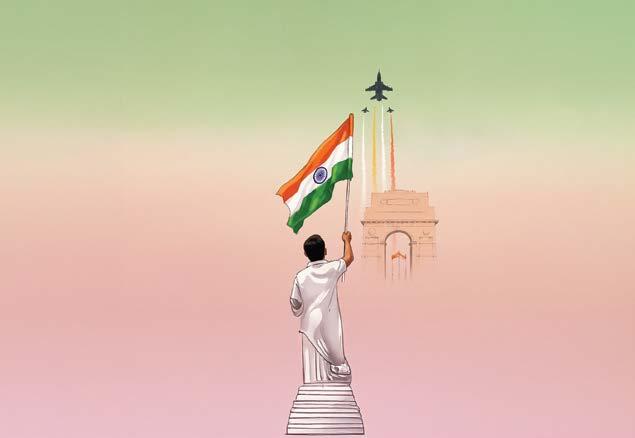





Ambassador Tirth Raj Wagle of Nepal and his wife Bimala hosted the annual networking tourism and business dinner to put the spotlight on Nepal’s many charms. Speaking to Salaam Bahrain on the sidelines of the impressively busy party space, Ambassador Wagle emphasised that the government of Nepal was actively promoting sustainability and renewal of natural resources in its approach. These include the Kathmandu Environmental Education Program (KEEP) to educate both locals and tourists on responsible tourism practices and limiting the number of climbing permits to reduce the environmental impact of tourism. These efforts demonstrate Nepal's commitment to preserving the natural beauty and fragile ecological integrity of Mount Everest while also supporting the economic benefits of mountaineering tourism.








India’s swift response to U.S. President Trump’s tariff hikes has realigned the BRICS co-operation story. It also means India will seek to expand new markets for its exports – and the Middle East is one of its ideal partners.
On 7 August, PM Modi said he was “ready to pay a heavy price” but would not bow to U.S. pressure of a 50% tariff and endanger the livelihoods of Indian farmers, agriculturists, fisherfolk and dairy workers. “India will never compromise on the interests of our farmers, livestock rearers, and fisherfolk. I know that personally I will have to pay a very heavy price, but I am prepared for it,” he said when speaking at the M.S. Swaminathan Centenary celebrations.
That very day, he spoke with the President of Brazil. The next day, he held talks with Russian President Putin, and it has been announced that he will soon visit China for the Shanghai Cooperation Organisation (SCO) Summit in end-August. This will be Modi’s first visit to China after the India–China military clash in Galwan Valley in 2020.
“India will never compromise on the interests of our farmers, livestock rearers, and fisherfolk. I know that personally I will have to pay a very heavy price, but I am prepared for it.”
— PM Narender Modi

Set against the backdrop of the seeming capitulation of countries such as Japan, Vietnam and S. Korea to the Trump tariff juggernaut, with promises of economic co-operation and investment, India’s firm announcement that the Trump announcement has crossed not one but two red lines, is being met with widespread interest.
The first red line is well-known and as old as independent India itself: India has consistently turned down import talks on agricultural and dairy goods and also GMO (genetically modified) products. The second red line has to do with India’s trade in Russian oil.
What has surprised other countries is that observers felt that the fabled Modi-Trump bromance that had seen India filling the world’s largest sports stadium in Gujarat in Trump’s honour (2020) has fragmented. Both the leaders say they are focused putting their respective countries first.
And then, there is the little contretemps about whether President Trump really brokered the ceasefire between India and Pakistan during the recent outbreak of cross-border fire. During his visit to Canada in June, PM Modi, in a widely and vigorously publicised phone call to President Trump, told him that there had been no outside intervention in the ceasefire and that India would never accept thirdparty mediation. The matter didn’t end there. PM Modi politely turned down the U.S. President’s invitation to visit him in Washington – after a luncheon party hosted by Trump for Pakistan’s Field Marshal Asim Muneer.

While diplomats and trade negotiators emphasise the importance of the India-USA story, there is no doubt that some red lines have been deliberately crossed by the U.S. tariffs but everybody is urging conversation over conflict
India can flex its muscles because it is not dependent on America for its defense supplies, unlike Japan, Vietnam and S. Korea. But, as Dr. Mohan Kumar, former Indian Ambassador to Bahrain and currently Director-General of the Motwani Jadeja Institute for American Studies maintained, “My recommendation for India is
neither confrontation nor capitulation but only conversation. We should continue to talk with the US because it's an important relationship… So if you have an opportunity given by the US in terms of this 21-day margin, you try to put all your resources and see whether you can negotiate a deal. I can tell you, if you put aside geopolitics and only look at trade, there is nothing unusual about the trade negotiations between India and the US.”
The Gulf Cooperation Council (GCC) is one of India’s largest trading partners, with bilateral trade exceeding US$ 161.59 billion in 2024. With India’s markets in the US clouded by higher tariff walls, New Delhi will possibly renew its efforts to push through an India-GCC FTA. This zone, which has witnessed significant growth in recent years due to its geographical proximity, complementary economic structures, and shared interests in technology and innovation, promises new trade growth possibilities. India has strengthened its engagement with the Gulf Cooperation Council (GCC) countries through several high-level visits and strategic initiatives. Both sides are working toward more robust economic and strategic partnerships, making the relationship a cornerstone of India’s ‘Look West’ policy and the GCC’s diversification strategies. The relationship is driven by energy security, growing trade volumes, and deepening bilateral ties.
Significant investments in infrastructure, real estate, ports, logistics, and start-ups are being made by Saudi Aramco, which has pledged US$ 100 billion in diversified sectors such as energy, technology, and infrastructure. Bahrain-based Investcorp, is active in the Indian market, with a focus on alternative investments, particularly in mid-market private equity. They have invested in various sectors including consumer tech, healthcare, financial services, retail, SaaS, e-commerce, and technology. Bahrain’s Economic Development Board is very active in wooing big Indian firms to set up base in the Kingdom. Sovereign wealth funds like the Abu Dhabi Investment Authority (ADIA) and Saudi Arabia’s Public Investment Fund (PIF) have also invest heavily in India’s infrastructure, start-ups and financial services.
All told, India is keen to pursue the promise of increasing geopolitical power, marked by increased strategic autonomy, stronger international partnerships, and a growing influence in the Indo-Pacific region. The promise of this rise is fueled by a combination of factors, including economic growth, military modernization and a more assertive foreign policy.
The Confederation of Indian Industry (CII) estimates that a BRICS free trade agreement with 5% average tariffs could add $60 billion to India’s exports by 2030. Hosting a 2026 BRICS trade summit could cement India’s role as a global power. According to Financial Times, Trump’s tariffs will reshape supply chains. In that case, India’s 44% share of US smartphone imports could net $50 billion in exports.
Ambassador Mohan Kumar predicts, “I think India will make the necessary effort to try and go at least halfway in meeting American demands. In return, I am also sure that Indians are expecting some tangible concessions in labourintensive industries where we can make significant gains in the American market.”

Strategic Partnerships
Strengthened Alliances: India is actively cultivating strategic partnerships with key nations like the US, Japan, and Australia, particularly within the Quad framework.
Multilateral Engagement:India is leveraging multilateral forums like ASEAN and IORA to promote its interests and shape regional dynamics.
Act East' Policy: India's 'Act East' policy aims to enhance its engagement with Southeast Asia and the broader Indo-Pacific, counterbalancing China's influence and promoting a rules-based order.
Economic Growth and Influence Military Modernization and Capabilities
Economic Reforms: India's domestic reforms, coupled with increased investment in defense and infrastructure, are driving economic growth and boosting its manufacturing sector.
Supply Chain Diversification: As global supply chains shift away from China, India is emerging as a major beneficiary, attracting foreign investment and manufacturing opportunities. In addition. India is re-aligning its economic partnerships and embracing closer ties with the BRICS countries and Africa.
Economic Strength as Power: India's economic momentum is translating into growing military capabilities and greater influence in international affairs. India is also widening its hold over international trade by working on blocs like BRICS and GCC countries to conduct trade in local currencies instead of the dollar.
Defense Budget Increase: India is significantly increasing its defense budget, modernizing its armed forces, and investing in cutting-edge technologies.
Maritime Security Focus:India is strengthening its maritime capabilities, particularly in the Indian Ocean region, to protect its interests and counter potential threats.
Technological Advancement: India is investing in research and development of advanced military technologies, enhancing its defense posture and strategic autonomy.
Geopolitical Positioning
Shifting from Non-Alignment:India is moving away from its traditional nonaligned stance, forging stronger ties with like-minded nations and pursuing a more proactive foreign policy. India is prioritizing its national interests in its foreign policy decisions, balancing its relationships with major powers and navigating complex geopolitical landscapes.
Regional Leadership: India is positioning itself as a key regional leader, actively participating in shaping the regional security architecture and promoting a stable and prosperous Indo-Pacific.



I
t has been a busy summer for the Bharati Association, flag-bearer of the Tamil community in Bahrain. The Association kickstarted its activities with a mega Labour Day celebrations, featuring entertainment and felicitations for workers. Over 1000 workers attended the show which was presided over Indian Ambassador Vinod Jacob as Chief Guest and by Dr Kanimozhi NVN Somu, Rajya Sabha MP as Guest of Honour.
Dr. Kanimozhi is also State Medical Wing Secretary and spokesperson of the Dravida Munnetra Kazhagam.
Later, during her short stay, Dr. Kanimozhi presided over the launching of the Tamil Month at the Embassy, which featured a wall of picturesque representations of Tamil culture, commercial strengths and crafts. The event was coordinated by the Bharati Association.


Finally, in light of its increasing activities, the Bharati Association has moved to a centrally located new premises in umm Al Hassam. The inauguration was marked with the hope that the Association would soon be able to have a dedicated space for all the Tamil diaspora in Bahrain. The function was presided over by the Ambassador and by noted speaker and





“To the Goddess who resides in all beings in the form of Shakti (the divine feminine power), I bow to her, I bow to her, I continually bow to her.”

This shloka is one of the most revered hymns glorifying the Divine Feminine. It acknowledges the inner strength, resilience, and divinity present in all women. NMS is deeply committed to nurturing a generation that values and promotes Nari Shakti—the power of women. The school believes that true empowerment begins with awareness and respect, and
actively shapes boys and girls to carry this message forward with confidence and conviction.
“Our institution does not just preach empowerment — we live it,” said Managing Director, Mrs Geeta Pillai, “From adopting thoughtful and impactful pedagogy which helps teachers of both genders to support female access to all growth opportunities to building an environment of encouragement for students to explore and showcase their strengths regardless of gender, NMS is teaching lessons on Nari Shakti for sure.”
Added Principal Dr. Arun Kuumar Sharma, “Our Managing Director herself is a remarkable example of a strong and visionary female leadership. Under her guidance, our school has grown in strength, values, and academic excellence. She continues to inspire every member of our school family — staff and students alike.”
Principal Sharma said, “We reiterate to all our new recruits and the existing staff members that all NMS teachers,
“Our institution does not just preach empowerment — we live it."
Geetha Pillai Managing Director
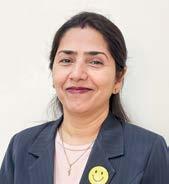

regardless of gender and age, must be mothers at heart and should embody the nurturing spirit of a mother. On the ground, this translates to a practical and tested pedagogy embraced by the school. NMS follows the Mother Teacher System, one of the most thoughtful and impactful practices especially in the foundational years of a child’s education. In this system, one teacher handles most of the academic subjects for a single class, much like a mother who takes care of all aspects of a child’s development. This allows the teacher to build a deep emotional connection with each student, understand their individual needs, strengths, and challenges, and offer personalized attention.
“I strongly believe that this system creates a secure, nurturing, and emotionally supportive environment
for young learners, which is essential for their overall growth.” Principal Sharma said.
Meanwhile, the school’s girl students, have thrived in an environment of equal opportunity and encouragement, bringing laurels in academics as well as sports. Three of the school’s girl students emerged as Gulf Toppers and many others as Island Toppers, making their mark across various competitive platforms.
What makes their journey even more remarkable is their excellence beyond the classroom. “Our girls' basketball team, for instance, has clinched the CBSE Cluster championship title for four consecutive years — a feat that speaks volumes about their perseverance, teamwork, and sporting spirit. Whether it’s on the field or in a debate hall, our
T“NMS follows a practical and tested pedagogy - the Mother Teacher System – in the foundational years of a child’s education.”
Dr. Arun Kuumar Sharma, Principal
girls lead with confidence and grace,” said Principal Sharma with obvious pride.
By creating inclusive classrooms, encouraging equal participation, and celebrating the achievements of all students regardless of gender, the school instills the values of Nari Shakti in everyday learning. Simultaneously, the boys in the school are taught to become empathetic, supportive individuals who champion fairness and dignity for all.
“Empowered women empower the world — and it begins right here, in our classrooms, our homes, and our hearts,” he said.
he longest-running annual community Dandiya is here – the Indian Ladies Association’s flagship cultural event. Set for Friday, September 19, at the Crowne Plaza Convention Centre, the event is a celebration in colour, energy and desi vibes. Get your tickets – 15 days more for Early Bird prices (BD 5) and from September its BD 6. Kids under 5 dance for free and there are great bulk purchase deals too. Call 6661 1041 for deets!
This year the ILA Dandiya Beats is sponsored by Lulu Group International, Ford & Almoayyed Motors, Kangaroo Kids, Colours Events & Exhibition Management Jotun, Srisoukya Ayurvedic Centre & Al Braq. Media partners are Live FM 107.2 and Salaam Bahrain . The vibrant poster has been designed by creative partner SXV Digital designer and founder, Vedant.
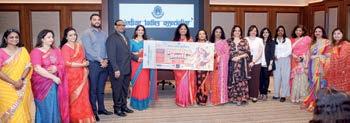
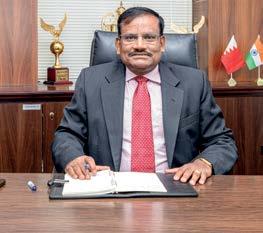
If you talk about saving for your child’s higher education, an insurance policy is not the usual route you discuss. And yet, more and more parents are doing just that as they face skyrocketing education costs.
According to D.P. Pattanaik, CEO and Executive Director of LIC (International) Company, “The main reason that we should invest in our children’s education fund is that it is important to ensure our children do not start their career burdened with debt (education loan). For many Asian parents, investing in a children’s education policy is a double insurance – it is a sensible cushion for their children’s future and an assurance that they will not, in their middle age, have to touch their retirement funds to send their kids to college – something that happens often.”
Here are reasons why an insurance policy for children’s education is a great idea and how parents should go about it.
Remember SIM: Start early, Invest right and Manage the portfolio smartly.
Treat a child’s education policy like a gift: Involve family in the discussion and encourage family and friends to contribute to the policy’s growth as a gift on special occasions like the child’s birthday. Just like couples open wedding gift registries with stores where guests can choose what to gift them from a pre-selected list, you can tell family and friends that you would like them to contribute to the policy as a gift. A child’s education policy should be the gift that families give a new born and top it up on subsequent birthdays.
DEBASHIS PATTANAIK CEO & MD OF LIC INTN’L
A child’s policy is a double assurance: That’s because, not only will your child have access to funds for a good education but that the protection will continue for the family if anything untoward happened to the breadwinners .
Calculate your corpus: The first step is to recognise that the college education costs a lot! Talk to parents of collegeage children and find out the cost. Then to estimate the cost of similar education for your child in the future, add 10% inflation cost annually as a basic inflation cover. That is how much college education would cost when your child is ready for it.
Remember, college fees do not increase each year. Every few years or so there would be a big jump. Sometimes the fee could even double. Such a jump could happen when your child is about to enter college and the corpus would typically get spent over 2-3 years.
NRIs trust LIC: For NRIs living abroad, the trust and facilities offered by L.I.C. International, one of the most trusted insurance brands in the world, is a safety net that will not only build a vital nest-egg but also be accessible if one were to return to India.
Specifically, check out the L.I.C. Plan 219 – Professional Education Plan (PEP). Customer can choose to pay premiums for first 5 years of the policy under limited term premium payment option. Under Regular premium payment option, future premiums can also be paid in advance by availing either premium sealing option or by paying in one lump sum under premium commutation at a discount.
The attractive features of PEP is that the plan is a Cash Back Plan for children. The sum assured under this plan will be paid in instalments from the policy anniversary falling due after the child attains the age of 18 years upwards.
As for the payment of Sum Assured to the child, Customer can opt for survival benefits at 20% or 15% of the sum assured annually. If you choose survival benefit option of 20% or 15% of sum assured, the child will receive 20% or 15% of sum assured for 5 years starting from the policy anniversary falling after the child completing 18 years of age and on 23rd year of the child, guaranteed additions for the entire duration of the policy is paid to the child along with loyalty additions, if any and 25% of sum Assured additionally in the second option. Additional protection riders like: Premium Waiver Benefit Rider and Family Protection Benefit Rider can be added to the policy.
PEP is just one plan out of over 20 plans (all L.I.C. International’s plans are issued in US$), which can cater to the needs of customer, like family protection, Savings, Health and Pension.
For more information about various products and services, contact LIC International’s experienced Life Insurance Consultants, visit the website at www.licinternatinal.com, write an email to bah.lici@licinternatinal.com or WhatsApp and call on +973 39936618 or +973 17210610. Please do check our Reel with D.P. Pattanaik on our social media channels.


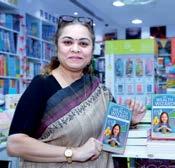





As India steps into its 79th Independence Day, we talk to remarkable Indian women in Bahrain who have helped redefine the success matrix and given new meaning to the image of modern India
Businesswoman, Founder of digital marketing company Butterfly Effect Co.; Beauty industry entrepreneur with The Gatsby Beauty Lounge; Founder and Managing Director of contemporary Ayurvedic health clinic, SriSoukya Ayurvedic Centre
“As a person from Kerala, Ayurveda and its beneficial health gifts were wellunderstood by me from childhood when it was part of self-care and health management rituals. However, stepping into the role of a healthcare entrepreneur, was a different thing – I had a specific vision for delivering the health benefits of Ayurveda in a contemporary setting. It took a lot of persuasion of the other stakeholders and convincing them that my vision would not dilute the essential Ayurvedic values. For example, unlike traditional Ayurvedic clinics, SriSoukya is light, airy and I chose white interiors which enhance a sense of healing from the moment clients step in.
SriSoukya – the name means well-being and health – today has two branches. At the core of operations is a team of excellent doctors, trained massage specialists and a well-stocked Ayurvedic pharmacy.
Bahrain was the first GCC country to embrace the healing aspects of Ayurveda officially. The NHRA* has been incredibly supportive of our growth.
Today’s Ayurveda patient and practitioner both have changed – the practitioner has more diagnostic tools to use and validate their traditional diagnosis. The core practices of Nadi Pariksha and Marma are still valid though, and used effectively at SriSoukya. Our patients too, come with a more modern mind-set. They understand the values of Ayurveda and expect to be partners in the healing process, unlike in the past, when the Ayurvedic doctor-patient relationship was more passive. Bahrainis –and all nationalities - are remarkably open to effective alternative medicine, so our clients come as knowledgeable participants in the Ayurvedic care process.
If there is one thing, I want to remind clients, it is that Ayurveda is a millennia-old medicinal science. It is not just for beauty treatments and relaxing. Unlike allopathy, the Ayurvedic approach has no one-size-fits-all treatment. Each individual is treated as unique and their discomfort and symptoms are seen in the context of the imbalances in their dosha. Ayurveda is especially effective for digestive, skin and musculo-skeletal health issues. Going forward we have so many plans to expand our treatment options and also include new areas such as Ayurvedic diet advise.
*NHRA is the National Health Regulatory Authority of Bahrain

Having said that, if you ask me the one Ayurvedic therapy that I follow for personal wellness, it would be a weekly Abhyanga massage – a rejuvenating and therapeutic massage with herb-infused oils, that literally sets you up for a busy life!
Growing up, words were my little treasures—tucked away in the corners of my mind, dropped into conversations at every opportunity, and fiercely guarded in countless family Scrabble battles. My real initiation into the world of cryptic crosswords came thanks to my older brother. The first time I cracked a clue on my own, it felt like love at first solve!
In 2011, after a hiatus, I stumbled upon a Facebook crossword group, and it was like finding a long-lost friend. I was instantly hooked again. Along with my friends Lakshmi Vaidyanathan and Ramki Krishnan, I realized we could create a dedicated space for this passion. So, on July 28th, 2014, 1Across was born – a social media space for puzzle addicts to sharpen skills and exchange notes.
Now, with over 300 cryptic and 1,500 mini puzzles behind me, each crossword I build uses creativity and logic to carve out solutions and break through mental barriers. Constructing crosswords is a mix of strategy and artistry; American-style puzzles demand precision and interconnectedness, and the grid rules are strict - every single letter has to be part of both an Across and a Down word. The British-style cryptics let me explore language playfully.
The big news is that I’ve recently accepted the role of President for the World Crossword Federation’s Bahrain chapter. This will be a game-changer. We're now building a formal society in the Kingdom, to introduce this wonderful hobby to more people in Bahrain. So, if you're in the country and love a good word puzzle, watch for us!
Historically, setting has been a male-dominated field, but the tide is definitely turning. It’s fantastic to see so many brilliant women getting published and recognized. We're not just solving the puzzles anymore; we're creating them
The real work is in the clues. Each clue is a miniature work of art governed by the ruthless logic of cryptic grammar. A single clue might take a week of writing and rewriting, haunting you at 3 AM until it’s perfect. A full 15x15 puzzle is a week-long dance of crafting, honing, and perfecting. Crafting that perfect anagram, uncovering a clever Spoonerism, or leading the solver down a garden path (and then giving them the satisfaction of finding their way out) …. There is a special joy in revealing a hidden answer within a seemingly random phrase - transforming “a decimal point” into “I’m a dot in place,” for example

People assume a cruciverbalist’s superpower is a vast vocabulary or encyclopedic trivia. Not true! The real skill is seeing the patterns and embracing curiosity. Every headline, billboard, or even someone’s name finds its way into my mental clue bank. You learn to see the world as one giant, jumbled-up puzzle waiting to be solved. And just like our nation’s journey toward independence, persistence is key; sometimes, getting to that last elusive answer means not giving up, no matter how tricky the path.
In January 2025, the visionary Vivek Singh a bureaucrat who runs the Indian Crossword League, called me to discuss this grand idea for a world championship. He asked me to be the "International Participants Coordinator," so I got to wear two hats: helping organize this global event and carrying the flag for Bahrain.
Co-founder and Director Berrio Logistics
When I went to study electronic journalism, my dream was to follow in the footsteps of Barkha Dutt and work at the heart of the newsroom. Life, however, had its own plans for me. Instead of chasing headlines, I now find myself chasing deadlines in the boardroom as the Director at Berrio Logistics—a turn I never expected, but one I’ve come to thoroughly enjoy.
My first job was with a French shipping company, handling admin and learning the basics of the logistics world. Over five years, not only did I figure out the ins and outs of the industry, I also built invaluable friendships and connections that have stood with me ever since. Looking for something more challenging, I made the shift to sales at another logistics firm. Being a social person really worked in my favor—I thrived, moved into management, and finally, when an opportunity came up, I became Director at Berrio Logistics.
I’m proud to say my team includes many women—with a female COO, HR head, and several others across our Mumbai and Bahrain offices. Women are fantastic at multitasking and bring a collaborative, thoughtful approach to the workplace. Together, we’ve handled our share of crises—particularly when shipments get stuck at borders and tensions run high. At such moments, titles really don’t matter; we pull together to keep our customers calm and informed and focus on solving any issue.
Women are playing a huge role in India’s economic ambitions, and I’ve seen new opportunities for women in everything from warehousing to e-commerce. The industry is full of inspiring female entrepreneurs. It’s true there are challenges and biases, but I’ve found that showing up, being true to yourself, and doing good work always wins respect—gender aside. Icons like Sudha Murthy, Indra Nooyi, Barkha Dutt, and Dr. Kalam have all inspired my outlook on leadership. Having said that, my mentors in this field have all been men, and they all have been super supportive, so I have no complaints. Logistics is about more than moving goods—it’s about shifting mindsets. Coming from a traditional family, I’ve watched roles change so much, especially with the rising confidence of today’s young women. My own journey in Bahrain, often as the only woman in sales field, pushed me further than I thought possible. I owe so much of my progress to the unwavering support of my husband and kids, who’ve encouraged and stood by me every step of the way.
If my career has taught me anything, it is that we can break expectations and do more than we ever imagined—especially when we have strong support both at home and at work.”

Active member of the Bahrain Businesswomen’s Society through which she nurtures Indo-Bahrain relations
Moving to Bahrain in 2007 set in motion one of the most pivotal chapters of my life. It was here that I stumbled upon a genuine passion for wellness and beauty, an interest that truly took root when I began working with VLCC—a name synonymous with excellence in the industry. That experience unlocked a lasting dedication to the world of holistic transformation.
Today, it’s impossible to ignore how female founders are leaving a unique imprint on the wellness sector, blending heartfelt community-building with their own lived stories. In my own career, being open and honest about my path has done more than encourage other women; it’s allowed me to forge deep connections, turning many clients into dear friends and confidantes.
Bahrain stands out as a beacon for women-led enterprises—over 40% of commercial registrations here belong to women. In the world of salons and spas, this translates into real opportunities for mentorship, growth, and supportive workspaces that empower women at every level. At Vitality Spa, our guiding philosophy is to let nature take the lead. We rely on organic, gentle treatments, standing firmly by the belief that botanical care is far superior to harsh, chemical-based products.
Our Moringa Herbal Hair Treatment, for example, has become a client favoriteone 85-year-old guest actually saw remarkable hair growth after her sessions—a reminder that age places no limits on vitality when it’s nurtured with love and expertise. India, women-driven wellness ventures are redefining entrepreneurship. Trailblazers like Shahnaz Hussain, Vandana Luthra, and Mira Kulkarni have proven that businesses can be both commercially successful and deeply attuned to the needs of women. These ventures do more than turn a profit; they drive genuine change and spark economic freedom, not just for founders but for entire communities.
There’s still more we can do to support women in the wellness industry, whether it’s streamlining licensing, lowering rental costs, making hiring more flexible, or introducing trial periods for new therapists. With policies like these, I’m hopeful we’ll see even more women step into and thrive within this dynamic industry.”

Champion of children’s financial literacy education and author of ‘The Wealth Wizard’ a children’s book on that subject.
Most people don’t go beyond piggy-bank coins and notes when dealing with children’s financial knowhow. But in an age when kids master complex technology in a snap, they have the capacity to go beyond savings and invest the money and make it grow too.
I have always been very comfortable with the intricacies and the formulae of wealth growth. At home, my husband and I have always been equal partners in these discussions and we always discussed financial matters in front of our daughter Krishna. Later, when she asked curious questions about the topic, we never tried to tell her these were grown-up matters - instead, we included her in our discussions and decisions.
Gradually, I found that she too wanted to start building her own nest-egg and we started having more detailed talks. That was when the idea of writing a children’s guide to wealth creation took shape.
Writing ‘The Wealth Wizard’ was a challenge at many levels – I needed to write a book that was not overwhelming but at the same time not comic-book style; I needed to impress my young audience about the seriousness of the topic but not be condescending and I needed to appeal as much to the parents as to youngsters because for children, financial decisions are possible only with family buy-in.
Again, my daughter came to the rescue – she loves reading books by Sudha Murthy for their simplicity and engaging story-telling. I read all of Mrs. Murthy’s books and realized that she used very simple language and humour to cushion complex ideas. That helped me to shape my style.
First impressions from those who have read the book have been encouraging. Many adult readers have expressed surprise at the idea but quickly warmed to it. My younger readers seem to love that I have taken them seriously.
Let me leave you with a couple of thoughts:
Children these days are very smart about grasping complex ideas. Just see how they master technology and apps effortlessly – so financial management is not difficult for them.
Inculcate in children the ability to distinguish between spending on what they need (essential) and what they want (luxury).
Children are capable of more than just piggy-bank savings. By teaching them to invest the money they save so that it grows, we will impart valuable financial lifeskills to them.

If you think “community” is just a collection of contacts in a WhatsApp group, think again. As President of GOPIO in Bahrain, I’ve learned that true connection goes miles deeper than just forwarding a festival greeting or a news link to 500 people who might not even remember joining. For me, building an authentic network begins with people; seeing them, hearing them, knowing their stories and letting them know they matter.
A real, engaged community is alive with conversation, collaboration, and caring. It’s people turning up in person, starter ideas bubbling to the surface, and members mentoring the next wave, all age groups, backgrounds, and ambitions mingling. At GOPIO – that’s the Global Organisation for People of Indian Origin - our focus has always been on these genuine connections, not just on expanding a contact list. Admittedly, digital noise is the great challenge of our age. If we’re not careful, any “network” risks turning into just another muted broadcast feed. That’s why we try to keep things human by hosting small in-person circles, encouraging members to share their journeys, and ensuring everyone feels ownership. Our mentorship programmes have bridged generations and helped young Indians in Bahrain land real opportunities. Our AI platform, AskGOPIO.com, now provides practical advice ranging from education to welfare, and our outreach touches everyone from students to homemakers to those in labour camps. Also our social commitment events have truly made a difference in our community, providing real help to those in need. We at GOPIO Bahrain have decided not to publicize our actions through media, in order to protect the dignity of those we assist. We quietly offer real support where it’s most needed, because dignity always comes first.
Were there growing pains? Absolutely! There were times our events drew only a handful or online panels felt flat. So, we listened, adapted, created interactive workshops, roundtables, and let new leaders shine. As for the coming year, we’re launching youth pitch forums, more mentorship, and a women’s leadership circle to build a stronger, more resilient diaspora. As someone raised in Bahrain, I know how to blend local spirit with deep Indian roots, making our culture inclusive and dynamic. Growing up in the Kingdom gives me a dual lens: I understand local integration and hold deep ties to Indian heritage. For GOPIO, I bridge these worlds by designing programmes that honour tradition while embracing modern Bahraini culture, making identity inclusive and dynamic.
As the women of this generation, we’re not just looking for a seat at the table. We are building our own tables and making sure they have plenty of room for others. In a fastshifting world, community is more than connection. It’s belonging, and that’s what we’re creating at GOPIO Bahrain: not just a network, but a family, ready for the future.”

‘Believe
I have always been a never-say-die dream chaser. That’s what got me to try out things that I had fantasised about but had never done before – like writing a book, scripting and directing a short film, anchoring interviews for broadcast channels – and entering a beauty pageant!
People who know me will tell you I am not the glamsham kind and that I don’t spend too much time on myself. I entered the Haut Monde Mrs India Worldwide Bahrain Queen pageant on a whim but it taught me so much. Signing up for the pageant itself was a leap, and the months of prep brought their fair share of nerves, discipline, and some self-doubt. Losing over 41 kilos was tough, but it taught me so much about sticking to your guns, believing in yourself, and not giving up, even when it gets hard.
Winning the title is something I’m still trying to wrap my head around. If you’d told me a few years ago that I’d be on stage in Ajman, cheered on by my family, I probably would’ve laughed. But that moment—seeing my husband and kids in the crowd, full of pride and joy—was one of the happiest times of my life.
The week in Ajman was a whirlwind—getting to know women from all corners of the world, tackling different photoshoots, and making memories I’ll always cherish. The highlight was definitely dancing Bhangra during the talent round and watching people in the audience join in. It felt so good to share a piece of my culture on such a big stage. When I heard my name called out as the winner, it truly felt like a win for everyone who stood by me—my family, friends, and the communities in both Bahrain and India. That support made all the difference.
People always talk about how a beauty pageant win opened doors for them. But let me tell you one thing – it opened my eyes. You see, I have always been confident about myself and my lack of the so-called ‘glamour quotient’ never stopped me. However, now that I have changed, learnt some beauty tricks and new ways to present myself stylishly, I notice that so many people treat me differently. To my eyes, that is just not correct. I want to tell people that I am still the same Ramanpreet inside. And that it is wrong to let appearances guide your judgement of people.

Now, I’m looking forward to launching my podcast, working on my next book, and jumping into more creative projects. If there’s one takeaway from this journey, it’s that showing up for yourself, staying disciplined, and letting your real self come through can make dreams become reality. If you’re dreaming of something, go for it; step by step, you’ll get there.”

Asays that she is always in a rush –like most parents are, who juggle their kids’ schedules and their own – and the Ford Territory fit perfectly into the family’s plans.
I have always loved driving. It started when I was a teen and too young to
he was passionate about. I picked up knowledge about cars, engines and how to judge automobiles.
Then, when I was in my first year of college, I started learning to drive, with our family chauffeur being my teacher.

Our Ford Titinium Test Drive this month has been conducted by Manisha Chakraborty, an experienced driver who has packed in many a Bahrain-Riyadh drives into her weekends and is familiar with the Kingdom’s longer drives such as Budaiya to Durrat Al Bahrain or Amwaj too.
My first car was a Maruti Suzuki and I guess the experience of driving in busy Indian roads has stood me in good stead.
In Bahrain, where I have lived for 19 years, the whole driving experience is different. The roads are excellent, the distances are much less – unless you’re driving across borders – and even though there are many more cars on the roads, overall, Bahraini drivers are polite and road rage is rare.
Test-driving the Ford Territory Titinium was a good experience. Here is a car that is a family SUV and is designed as a roomy yet stylish vehicle. I found that there is ample space in the front and in the back – and while I am myself on the petite side, I think even much taller people would find fitting into the Ford comfortable. Thanks to a 10-way electrically adjustable driver's seat and a steering column that can be tailored for rake and reach, I can safely say even taller drivers will find the fit comfortable behind the wheel.
I think because the car is designed as a front-wheel drive and not an all-wheel drive, the absence of driveshafts and rear differentials give it much more spacious legroom in the rear also for a reasonably compact family car footprint.
The Territory is offered in three flavours: Ambiente, Trend, and Titanium, with the last being an all-options top-of-the-line model. The model that I used for the test-drive was a pleasing pistachio green colour with beautiful dual tone interiors in premium leather – charcoal grey with an orange trim. The exterior catches your eye instantly with the imposing exterior, sleek interior, available 19-inch alloy wheels, full LED headlamps and tail lamps and LED daytime running lights. The top-of-the-range Titanium model comes with a vast glass “moonroof”, which is nice and airy but can be sealed altogether when the sun is out.
I read that the all-new Ford Territory was envisioned through Ford’s new ‘Progressive Energy in Strength’ design philosophy, which is based on the brand’s heritage and its iconic aesthetics.
Maurizio Tocco, chief designer, Ford Territory, is quoted as saying that the three key areas for customer satisfaction were a commanding presence on the road, a sense of spaciousness inside, and smart technology – and all these are

amply demonstrated in the performance and design.
The auto industry is currently going through an extremely competitive phase and value for money is important. Let’s look at the car’s performance: I found the car rode smoothly. When test-driving, I did take it through some of the narrow Manama streets and it handled the turns and twists well.
For the driver, Titanium model comes with just about everything you might need and more besides, including a rear-
view camera, lane-keep assistance, blindspot monitoring, adaptive cruise control and automatic braking. The 12-inch digital instrument cluster makes reading the driving notes easy and controls most functionality.
And the spaciousness extends to storage too – the all-new Territory is also equipped with more than 20 spacious storage compartments – as well as an extensible trunk with a 448-litre volume – allowing passengers to flexibly use storage spaces throughout the car. And the boot can be opened handsfree by just passing your foot below the boot – great for women with armloads of shopping!

Since I only had the car for a weekend, I cannot talk with assurance about the fuel consumption, but reviews say that fuel consumption is a standout on the Territory: Ford says 9.0L/100km in a mix of highway and city driving.
On the road, the Territory moves with quiet assurance. Like all Ford Cars, the Territory is packed with safety features. There are front, side and curtain airbags for all precious cargo and the boot lid is electrically operated.
The Territory really should be on the test-drive list for those in the market for a family crossover. It is a clear market leader and offers a great deal as a family runaround and road-trip car.
Two Indian Navy of cers have made history with the rst-ever double-handed circumnavigation of the world by Indian women

‘Sailing into the sunset’ is a phrase that evokes pleasant and relaxing images. However, for Lt Commanders Dilna K and Roopa A, two Indian Navy women officers, the words draw a picture of an adventure that has set a new record in grit, skill and courage – the very first double-handed circumnavigation of the world. Sailing aboard The Indian Naval Sailing Vessen (INSV) Tarini, the two officers took just over eight months to complete their journey.
“Yes, we made it,” said Lt Commander Dilna K and Lt Commander Roopa A, who achieved the feat, as their yacht dropped in Marmagoa Port. The historic flag-in ceremony was attended by defence minister Rajnath Singh who praised the two officers for facing the physical and mental obstacles head-on.

“You must document the experiences of this journey with the same spirit with which you completed it. Record your bitter-sweet experiences and learnings so that the future generation, especially
our young women, are inspired by it,” Rajnath Singh told the two officers, “The miraculous work done by you is not only your achievement but also our achievement as a nation.”
Commander Dilna said, “On October 2, 2024 we left Goa with a lot of hope and courage for this expedition, and today we stand here alive and strong together. We flew our national flag and Indian Navy flag at every sea and land across the Earth. Wherever we landed, we were greeted with cheers and care, reminding us of the goodwill we have as Indians.”
Commander Roopa, who “lived all [her] seven lives in this voyage”, said, “The world of the sea is on this same


planet, but it’s a different whole world out there. I have seen the sea glow at night, the sky filled with galaxies, shooting stars, sheer darkness that brings the mind and body to peace. In this voyage, I found a friend feeling and a friend in myself. How many can?”
Over eight months, the duo covered a distance of 25,400 nautical miles (approx 50,000km) across four continents, three oceans and three Great Capes, braving extreme weather conditions.
According to Navy officials, the duo made port calls at Fremantle (Australia), Lyttleton (New Zealand), Port Stanley
(Falkland Islands) and Cape Town (South Africa). The officers engaged in numerous diplomatic and outreach engagements, interacting with parliamentarians, Indian diaspora, school children, Naval cadets and university faculty across the globe.
“In a rare gesture, they were honoured as special invitees at the Western Australian Parliament in recognition of their achievements. Their accomplishments received accolades from local communities, international sailing bodies and foreign parliaments serving as a beacon of women empowerment, maritime excellence and

national pride,” the Indian Navy said in a statement.
The crew encountered winds upto 50 knots (93 kmph) coupled with stormy weather conditions and extremely cold temperatures during the journey, setting the ultimate test of human endurance, perseverance and sailing skills.
The circumnavigation of the earth under sail was first attempted by the Navy’s Capt Dilip Dhonde who became the first Indian to do so. It was followed by Commander Abhilash Tomy who became the first Indian to do so nonstop. An all-women crew of six naval women successfully completed a circumnavigation of the earth on the same sailing yacht INSV Tarini as part of the first edition of Navika Sagar Parikrama in 2017.
Apart from the Tarini, the navy has built boats like the Tarangini, Sudarshini, and Mhadei, which are controlled by sails to undertake adventure expeditions using its ancient navigational technology.
Warm-hearted fashion icon and popular influencer Tamnna Chaudhary Malik threw a stylish, resort-style birthday party for herself and her guests agreed that it was a fun summer day out, full of great vibes.



With younger travellers shaping the holiday season preference table, more and more Indian travellers are breaking the ‘seasonalonly’ holiday tradition by taking festival and event-centric vacations. As per the recent data released by Thomas Cook India and its subsidiary SOTC Travel, nearly 75% of the respondents showed keen interest in festivals in their travel calendar. This change in tastes reflects a larger trend for year-round travel inspired by events, not just in India but worldwide.
In search of the ‘authentic cultural engagement’, Indian travellers are now keen on immersing themselves in the vibrant atmosphere of international and Indian festivals, which offer unforgettable experiences and an authentic taste of local traditions.
The India Holiday Report points out that Indian travellers are actually choosing destinations by their festive programmes. The movement has birthed several tour options – from curated festival portfolios by giants like SOTC to smaller, independent travel guides who use social media to put together like-minded individuals for themed tours – one which takes you to weaving or craft clusters across regions, for example, or on culinary journeys or event-based trips that have a largely secular appeal even if they are grounded in a local festival (check out our favourite Fab Five events) .


Named for the Great Indian Hornbill which is considered sacred and a symbol of boldness and grandeur in Naga folklore, the Hornbill Festival is a joyful exposure to the littleknown culture, crafts and cuisine of Nagaland – especially the 17 major tribes.
It is celebrated each year from December 1 to 10. According to Tourism Nagaland, the 2024 edition attracted over 173,00,000 visitors.
The festival includes traditional Naga games, arts and crafts displays, food festivals, and cultural performances like dances and music. There's also a night market in Kohima where visitors can enjoy local food and beverages.




On the 14th of January each year, in the normally industrious city of Ahmedabad – and in most of Gujarat, for that matter – life takes to the skies. In Ahmedabad, the International Festival of Kites is celebrated and almost every household has multiple kites soaring in the skies.
While the underlying festival of Uttarayan marks the movement of the sun northward, the Kite Festival is a secular affair and every community participates in it. In fact, some say the tradition of kite competitions and the festival itself was brought to Gujarat by Muslims.
Kites of all shapes and sizes are flown, and the main competition is to battle nearby kite-flyers to cut their strings and bring down their kites. At night, kite fighters send up bright white kites to be seen in the darkness, and skilled flyers will send aloft their tukkals with strings of brightly lit lanterns in a long line leading back down to the rooftop.
Preparations begin months ahead and people find their favored kite-makers who prepare strong resilient kite bodies with springy bamboo frames and kite-paper stretched to exactly the right tension. Lastly, the kites are attached to a spool (or firkin) of manja, special kite-string coated with a mixture of glue and glass to be as sharp as possible for cutting strings of rival kites. These days, after a spate of unfortunate accidents where tangled manja hurt pedestrians and two-wheeler drivers as well as birds, there has been an active effort to prioritise safety. The use of cotton strings over nylon, using stone powder manja instead of glass-powered ones and flying kites in open areas are some measures.
There is even a Patang Bazaar (Kite Market) in the Old City, for all kite lovers to stock up for the festivities. On the ground, there are food stalls in every neighbourhood and families and friends gather for impromptu get-togethers.



There are three festivals that bring alive the French colonial ties of Pondicherry (or Puduchery as its Tamilian avatar is called today), India’s tiny union territory by the sea, with its quaint Frenchified architecture and fusion patois and cuisine.
One is Bastille Day – yes you heard that right. On July 14, residents celebrate the French patriotic holiday with a colourful show of Indo-French ceremony. Uniformed war veterans - or their descendants, since nowadays there are just a handful of veterans alive - march along Puducherry Main Street singing 'Marsellaise' and waving French and Indian flags. Pondicherry was a strong French bastion and more than 100,000 Indians fought for France during the two world wars. Indians served as civil servants and soldiers, not just in French territory in India but across French Indochina up till Vietnam.
The Masquerade or Mask festival takes place alongside Pongal, the Tamil Harvest Festival in January. It adds a touch of French flair to the traditional colour of Pongal. People wear beautiful European masks or a combination of Indian and French features in fantastical masks and come out in a parade. s one of the celebrations in Puducherry that attracts tourists and people from neighboring areas.
The third festival is the Fete de Pondicherry, a cultural celebration of Pondicherry’s unique amalgam of Franco-Tamilian heritage. It is celebrated on November 1st each year and is celebrated with parades and fireworks. Streets and monuments are decorated with lights and vibrant fabrics, traditional music fills the air, and people dress in regional and colonial attire.


The Pushkar Camel Fair India 2025 is claimed as the world’s largest livestock and camel market. What started historically as a trade fair for cattle, developed into an annual market for camels and horses too about a century ago. It is a winter gathering in Rajasthan’s Ajmer district, usually in end-October or early November, coinciding with the start of the Hindu lunar month of Kartik and ending on the full moon night.
Pushkar braids together the three strands of Indian culture, spirituality and the serious business of India’s cattle and livestock heritage. Undoubtedly, the stars are the haughty camels – over 50,000 of them – and their pastoralist owners, especially the Raikas, a traditional camel-herding community. Visitors can enjoy the carnival-like atmosphere, complete with musicians, dancers, acrobats and even snake charmers, alongside traditional games such as kabaddi. The cultural performances, which range from folk music to contemporary acts, showcase the best of local talent.
The evening is reserved for the stunning ‘deepdaan’ ceremony, where hundreds of candles float on the Pushkar Sarovar, creating a mesmerising sight. Nature lovers will appreciate the early morning walks, where they can explore the beautiful surroundings of Pushkar, including the sacred Pushkar Sarovar and the town’s many temples.

The fair also hosts a Shilpgram Handicraft Bazaar, where you can pick up Rajasthani crafts from artisans.
Today, the Pushkar Fair has evolved into a grand 6,20,000 visitors (2024 figures).


Its particularly apt that the famous Surajkund Crafts Mela should take place in Faridabad, Haryana. After all, the town was given a second life in the 1947 by Kamaladevi Chattopadhyaya, doyenne of the Indian crafts revival and founder of the Crafts Council of India, as the new home for re-settling refugees of the Partition.
The Surajkund International Crafts Mela is one of the largest cultural fairs in the world. It was conceived as a platform for the huge pool of skilled artisans, who used indigenous technology to create beautiful local crafts, but were suffering due to the cheaper machine-made imitations. The Mela is held every February and is today famous world over as the source centre for the global corporate gifting industry.
Each year, the Mela authority invites Theme States to share the spotlight as well as Partner Countries which can host craft pavilions. The Mela ground is spread over 40 acres and houses about 1000 work huts that host craftspersons and weavers.
You don’t need to be on a work trip to visit Surajkund. Simply a love of crafts will take you there – and the dazzling variety of craft and cultural programmes will enchant you. Be warned though – Surajkund can get very crowded and tiring even in pleasant February weather.

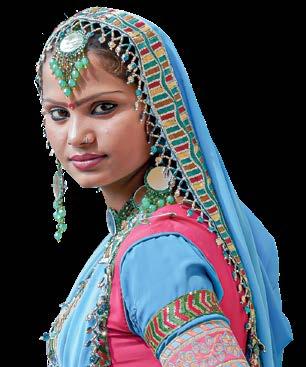



Master your photography and filmmaking, with next-level Dual Pixel CMOS AF II focusing, an up to 8 stop1 Image Stabilizer, and continuous shooting at up to 40 fps.2 Video looks incredible, whether it’s oversampled 4K 60p or 6K RAW, 3 and image quality excels whatever the conditions throw at you.






2





Let your creativity thrive with the 1


Master the rule of thirds: Imagine your frame divided into nine equal parts by two horizontal and two vertical lines. Position key elements along these lines or at their intersections for a more balanced and engaging composition.
Despite our click-happy smartphone times, a well- composed photograph is still a work of art. Canersa and lenses from Canon make photography a pleasure and help create everlasting memories
angles of different photos come out… differently!
Find the right light: Natural light, especially during the golden hour (early morning and late afternoon), is often the most flattering. Avoid harsh midday sun. Experiment with soft, diffused light and explore how light interacts with your subject and surroundings.
Get creative with angles: Don't be afraid to shoot from different perspectives. Try low angles, high angles, or even shooting through objects to add layers and depth to your photos.
Pay attention to the background: A cluttered or distracting background can ruin an otherwise great photo. Simplify your background or use shallow depth of field (blurry background) to isolate your subject.
Focus on your subject: Ensure your subject is sharp and in focus. Use the focus point on your camera or phone to target the most important part of the image.
Shoot in RAW format (if possible): Shooting in RAW allows for more flexibility in editing, giving you more control over the final image.
Don't be afraid to experiment: Try different settings, angles, and compositions. Don't be afraid to make mistakes; they are part of the learning process.
Edit with a light touch: Use editing software to enhance your photos, but avoid over-editing. Subtle adjustments to exposure, contrast, and color can make a big difference.
Know When to Use a Flash Flashes aren’t just meant for dark environments. But flashes are useful outdoors, too, even in the middle of the day. If you’ve ever heard of “fill flash,” this is why it’s so important. You can fill in ugly shadows on your subject just by using a gentle flash – and most people looking at the photo won’t even be able to tell.
The challenge of black& white: When shooting in black&white, remember that lighting plays an even more critical role. Hard light creates stark contrasts and dramatic shadows, ideal for portraits that convey intensity or toughness. Soft light, on the other hand, produces smoother transitions and a more subtle mood.
Shooting in black and white also demands greater attention to detail. Without color to distract, flaws in composition, lighting, or focus are more obvious.
Be present and mindful: These days its easy to be shutter-happy and start clicking or posing for those social media posts as soon as you enter a photo-worthy space. But pause! Take your time, observe your surroundings, and capture the moment as it unfolds.


Use a tripod (when needed): For low-light situations or when you need a very sharp image, a tripod can help you avoid camera shake and capture sharper photos. And do change your tripod position so that the



Bahrain Indian School, proudly operating under the banner of Bharatiya Vidya Bhavan, has earned the prestigious “Outstanding” rating from the Bahrain Education & Quality Authority. This recognition reaffirms BIS’s unwavering dedication to academic excellence, holistic education, and nurturing global citizens.
A Landmark Year
The academic year 2024–25 proved to be a landmark one, with BIS achieving a flawless 100% pass rate in Grades 10 and 12. Grade 10’s Pritha Singh stood out with an impressive 97.4%, while the top performers in Grade 12 Science and Commerce streams scored 95.8% and 95.6%, respectively. English, French, and Mathematics saw perfect scores, with over 96% of students receiving A grades in English alone.
Global Distinction
On the international front, BIS became the only school in Bahrain to be placed in the Advanced band in PIRLS with an exceptional score of 630. In TIMSS 2023, BIS exceeded both national and global averages. Grade 4 students achieved scores of 626 in Math and 642 in Science, while Grade 8 learners reached 590 in Math and 643 in Science—achievements officially recognized by Bahrain’s Ministry of Education.
BIS soared to international acclaim at the World Scholar’s Cup Global Round 2025 in Doha. Competing against an elite cohort of over 1,600 participants—including 600 senior and 1,000 junior scholars—BIS students delivered an extraordinary performance, amassing numerous trophies, gold, and silver medals across individual and team categories.
In the Junior Division’s Team 201—Lavanya Agarwal, Prakriti, and Arnav Singh Dewan—secured an outstanding 2nd place overall, qualifying for the Tournament of Champions at Yale.
Regional victories
BIS maintained a commanding presence in regional competitions by winning the Overall Championship at the BME French Poetica 2025 in Kuwait and taking top spots in the English and Hindi Poetica contests across the GCC. The school clinched second
place in the BME Sports Quiz and the Bhavans Math & Science Symposium, and proudly hosted the Bhavans Model United Nations 2024 under the theme “The Phoenix Effect.”
In mathematics, BIS celebrated the crowning of Kushagra Sah as Math Wizard 2025 and saw Lakshya Kulshreshth recognized as School Topper in the Sacred Heart Math Competition. BIS triumphed as host of the BISQ 2024 quiz competition, winning first place along with a $1000 prize. Students also gained accolades in the Future Science Challenge, Codeavour 5.0, Techno Fest, Word Buster, and in both Sanskrit and French language championships. Their artwork reached international audiences through the WHO Tobacco Day Art Contest.
Whether in the Shastra Pratibha Contest that took students to prestigious Indian institutions such as DRDO, IIT Delhi, etc. or at the Bahrain Students’ Innovation Congress, BIS students were in the limelight for their excellence.
Sporting excellence was another hallmark this year. BIS students won gold medals in chess and table tennis, cricket and badminton
Cultural vibrancy flourished at the Multicultural Fest 2024, organized in conjunction with Bahrain’s National Celebration Week. The school’s Annual Talent Hunt Fest offered students from KG1 to Grade 12 a platform to showcase their abilities in music, dance, acting, and art.
BIS continued to uphold its commitment to the community through humanitarian initiatives supporting the Indian Community Relief Fund, Bahrain Breast Cancer Society, and the Royal Humanitarian Society. Students also participated in food distribution programs to frontline workers and migrant laborers, reflecting BIS’s ethos of service.
Among the year’s notable achievements, Manoj Subramaniam Sathyanarayanan became Bahrain’s only student to clear JEE Advanced 2024 without coaching, securing admission to IISER Trivandrum. Meanwhile, Dr. Preet Kamal Bhatnagar was awarded Best Teacher In-Charge – International Zone by the Science Olympiad Foundation. BIS also received Best School and Best Principal honors from the International Olympiads Foundation.




Agrand new hotel has opened doors in Al Seef – the Savoy Grande. The hotel promises a deluxe and indulgent stay at affordable rates. With the whole experience curated under the watchful eye of hospitality industry veteran, Shantaram Shetty, the hotel boasts of luxury suites with amenities such as private study, soaking tubs and marble bathtubs and a spa, modern health club and business meeting spaces.
The hotel offers seven distinctive dining concepts including an exclusive cigar lounge, the Winners Lounge sports bar, Japanese restaurant Mizo and Chinese culinary hotspot Chow.
“We are very focused on making a mark in the business travel sector as Bahrain grows in international business,” said Shetty, “We see a vibrant future for this niche and have combined luxury and business amenities with a good tariff for rooms and our F&B as well.”



Re-interpreting patient care and comfort, the new hospital is a centre for medical excellence

The Al Hilal Group is the largest healthcare chain across Bahrain and manages two multi-specialty hospitals and a network of eight multispecialty medical centers. This includes a hospital in Muharraq and the newly acquired Al Hilal Premier Hospital in Segaya. The medical centers are located in Manama, Riffa, Salmabad, Hidd, Hamad Town, Askar, Sitra, and Manama Central. The Group looks after over 7,000 patients daily across its network and had built a reputation for sterling care and healing with a top-class multinational team of doctors, medical personnel and specialists.
The newest entry, Al Hilal Premier Hospital, is the 10th branch of the Group, and has lifted the trajectory of

recovery with an emphasis on patient -centered care delivered in surroundings that equally emphasise comfort and a serene healing environment, supported by clinical excellence and patient satisfaction. Operating under the tagline: “Trusted Care and Premier Experience,” the hospital embodies a blend of clinical expertise, innovation, and trustdriven service.
The Al Hilal Premier is a 65-bed capacity hospital designed to offer a world-class healthcare experience under one roof. The hospital is equipped with cutting-edge medical technologies and modern infrastructure.
“Al Hilal Premier recasts the healthcare approach by making available all the necessary links to good healthcare in an environment that puts patient comfort at a new level,” explains Dr. Sharath Chandra Chief Executive Officer, “Al Hilal Premier offers advanced surgical capabilities in niche health concerns such as spinal surgery and neurosurgery and in gynaecology, in areas such a treatment of women’s issues like PCOD. Overall, I want to emphasise that our
comfort and serenity approach does not compromise on the delivery of topclass health solutions and recovery.”
Other areas of specialized medical services, including cardiology, neurology, internal medicine, general surgery, orthopedics, urology, gastroenterology, bariatric surgery, pediatrics, ENT (Ear, Nose, and Throat), general medicine, and dentistry. Each department is led by seasoned consultants and supported by advanced diagnostic and treatment technologies.
While offering the highest standards of healthcare, Al Hilal Premier Hospital also ensures cost-effective consultation fees to make top-tier medical services more accessible to the community. General physician consultations are available for just BD 5, while specialist consultations are offered at BD 10— making high-quality healthcare within reach for everyone. Each patient receives individualized attention and a seamless journey from diagnosis to recovery.
The Management, Staff, Students & Parents of
Wish all Indians a progressive

Whether seeking routine check-ups, urgent medical care, or complex surgical interventions, patients can trust Al Hilal Premier Hospital to deliver excellence with compassion.
“Al Hilal Premier recasts the healthcare approach by making available all the necessary links to good healthcare in an environment that puts patient comfort at a new level.”
Dr. Sharath Chandra Chief Executive Officer



P.O. Box : 31595, Building No.: 109, Road 7307 Block 473, Budaiya P.O., Kingdom of Bahrain
Tel: +973 1759 8000, 32327655 email: info@bhavansbahrain.com website: https://bhavansbahrain.com
With the explosion of saree groups online, every saree fashion follower has her own favourite. And if she wants more – well then, like Bahrain residents Pradnya Subandh and Sunanda Gaikwad, you start your own group! ‘Saree, the Indian Drape’ recently celebrated its fifth anniversary with a glamorous, summery bash hosted in Usha Ashar’s Vitality Wellness & Spa. The theme was Summertime flowers and ladies came dressed in flowy chiffons and breezy cottons, all adorned with flowers – as print, fabric paint, block print or embroidery.
“An idea born in 2020 out of the stress of pandemic isolation has blossomed into a haven of creativity, style and sharing,” Pradnya says, “My co-founder Sunanda and I have also tried to go beyond pretty pictures and tried to make a difference. We've held charitable events, including donating unused , new, and pre-loved sarees from our stock to tribal women in India. In Bahrain, we've hosted several cultural and creative events that have brought our community closer.”
Any lady with a love for the saree is welcome to join the group – age and nationality no bar! Just find then on Facebook or Instagram and put those pleats in place.





Chef Vijay Kumar’s winning the James Beard award - in addition to threetimes Michelin - has made him a celebrity in the global kitchen space.

here is no doubt that South Indian cuisine is holding sway on the global stage. After decades of endless Rogan Josh as the representation of Indian food, epicures of all nationalities are recognizing the exotic and amazing tastes of Kerala and Tamil Nadu and to a lesser extent, Andhra Pradesh. Karnataka has not yet made much headway beyond its golden dosa varieties.
At the heart of a culinary discovery of the wonders of South Indian cuisine on the global stage, are a brigade of brilliant chefs who come from humble backgrounds and are mining their personal kitchen histories and recreating their grandmothers’ and mothers’ recipes for regional Southern fare that they are serving with aplomb. I have personally met two: one is Chef Suresh Pillai, who manages a popular high-end restaurant in Bahrain – the Jashan by Chef Pillai at the Wyndham Garden in Juffair.
Chef Pillai is the son of impoverished fishing-net makers from Kerala and a college drop-out (he famously posted his below-par school results on social media and asked parents to stop pressuring students to get the perfect score in academics) and by sheer creative culinary sizzle, he reinvented himself as the king of a restaurant empire spanning India, UK and the GCC.
The second is Londonbased Chef Jomon Kuriakose, currently the Director of Culinary at the Tiffin Box chain of restaurants and formerly the youngest Executive Chef in London(at The LaLiT London). While his cuisine is rooted in his


memories of his mother’s food, Jomon is a master at giving it a contemporary twist and plating the dish to look sophisticated.
The third and latest superchef to storm the bastions of good taste, is Chef Vijay of the celebrated Semma in New York, who has taken culinary fame and achievement to stratospheric heights by becoming the first Indian to win the coveted ‘Best Chef in New York’ title in the James Beard Awards – considered the Oscars of the American restaurant and hospitality industry. Semma – which means “Fantastic” in Tamil slang - is part of Unapologetic Foods, a company that operates different restaurants presenting authentic Indian food without dimming its light and making it ‘palatable’ for a new and foreign diner.
Thus, if you were lucky to get a seat in the stylish 65-seat Greenwich restaurant, where, reports say, over 1,000 line up around the block for a place, you would be served Chef Vijay’s Nathai Pirattal (snails in a tamarind-ginger-pepper sauce) or maybe Kudal Varuval, a semi-gravy dish of goat intestines cooked to a perfect texture in a bath of caramelised onions and coconut milk and scooped up with a roll of soft Kal Dosai – a homely and plump dosa, quite unlike the starry diva which is the triangle gunpowder dosa. After winning the James Beard award, Chef Vijay’s menu has become the go-to playbook for South Indian chefs the world over. His signature Nathai Pirattal has spawned a thousand imitations as far away as him hometown, Tamil Nadu – so much so, a local daily in Tamil Nadu claimed that after the news, fishermen have been inundated with demand for the slo-mo mollusc.
“I loved eating my grandmother’s snails but did so in secret, hiding my tiffin box,” he recalls, “The rich boys at school would make fun of me for eating something dug out from the soil, from under a rock or the giant coconut palm leaf squelched by the rain. Despite being the school topper, they judged me, belittled me because snails were considered unfit for eating … for
years I carried that shame, fear and anxiety. Now that shame is my badge of honour. Look where the snails got me,” he said, after his award ceremony.
Like most young Indian boys, Chef Vijay’s first ambition was to become an engineer but when funding thwarted that plan, he signed up for a chef’s course in the local catering college – again, no Cordon Bleu affectation but a humble local institute – where he discovered that the French called snails escargot and it was considered a delicacy! For Vijay, cooking wasn’t so much of a passion; instead it was a life skill. “I have three other siblings and since my mother worked on a farm, all of us helped her in cooking and chores. But the way my mother rustled up a quick meal for us fascinated me,” he says.
Assisting his mother and grandparents, Vijay developed a photographic memory of each stage of cooking. The culinary school just helped him understand the science of food.
When you consider that New York is a notoriously difficult to win over restaurant space –why, even the glamorous and social media savvy Priyanka Chopra stepped away from hers after it started leaking huge losses – Chef Vijay’s is a wild “Puss-in-Boots” kind of culinary fairy tale. Semma, established in 2022, at the rim of the pandemic, went on to win New York City’s only Michelin star for an Indian

When you consider that even the glamorous and social media savvy Priyanka Chopra’s restaurant could not win New York over, Chef Vijay’s success is a wild “Puss-in-Boots” kind of culinary fairy tale.
“When I started cooking, I never thought a dark-skinned boy from Tamil Nadu could make it to a room like this. The food I grew up on, the food made with care, with fire, with soul is now taking the main stage. There is no such thing as a poor person’s food or a rich person’s food. It’s food. It’s powerful. And the real luxury is to be able to connect with each other around the dinner table.”



restaurant for three years in a row and was voted No. 1 in the hallowed New York Times Best Restaurants list. The restaurant was named immediately after its debut, as among the Top Ten New Restaurants by Bon Appetit.
Chef Vijay’s journey to culinary legend-hood started in Dindigul, Tamil Nadu (and yes, his Semma menu does feature the famous Dindigul Biriyani). Living in a small C-Town of Natham, the family rarely went out dining and mealtimes were made up of delicious homecooked food – he remembers his father shopping for and meticulously choosing the best cuts of meat, the freshest seafood and his mother cooking it with recipes wrapped in rustic flavour. He got his true experience of sustainable cooking during his summertime visits to his grandparents’ farm in the village of Arasampatti. There he would go foraging with his grandmother in the paddy fields for snails that she would cook in a mud pot or hunting deer with his grandfather to make a spicy venison – which also features in the Semma menu as a slow-cooked shank, flavoured with star anise and Kalpasi, a lichen-like spice, popular in Chettinad kitchens.
“We woke up with the sun and went with our grandparents, foraging for snails, hunting deer or fishing. Remember there was no market, no refrigeration, no store” he recalls, “My grandmother would cook fresh vegetables with home-ground spices and aromatics in a mud pot on an open fire pit in the middle of a paddy farm; you could feel the soil breathe. Then she would ladle out the snail curry in tamarind sauce and coconut on banana leaves.”
So strong is the memory that his mother’s after-school snacks, that sprouted moong with spices (Mulaikattiya Thaniyam) and stir-fried seasonal vegetables (Uzhavar Santhai Poriyal) that grew on their farm are now part of Semma’s vegetarian and vegan menu. Also featured is Mangalore Huukosu , fried florets of cauliflower dipped in chickpea-and-rice-flour batter and drizzled with coconut chutney and the ubiquitous Gunpowder Dosa, a crisp, triangular lentil crepe, dusted with a spicy powder on its soft belly.
After graduating, he polished his skills at the Taj Connemara in Chennai and also on a cruise liner. His passion for cooking his childhood meals took a back seat as he worked on Continental menus and perfecting precision and efficiency over creative flair. Then he came to America. He did some standard dosa turns before joining the famed ‘Rasa’ in the Bay Area. During his time there, the restaurant won a Michelin star (2016) as well as the title of Best Indian Restaurant in the Bay Area. Although he got that first
Michelin star and accolades, Vijay was “cooking with artichokes, asparagus and California vegetables” and quite unhappy.
“I just wanted to cook like my mother and grandmother, have a kitchen where I could thrive and not debone the meat but let it melt and glide off the bone instead,” he say. That opportunity came in 2021, when he he met Roni Mazumdar and Chintan Pandya, founders of Unapologetic Foods. They believed in Chef Vijay’s culinary vision and took him to New York as founder-chef of Semma
Authenticity is a prized possession at Semma and it goes beyond the food. The restaurant has kept to the tiffin-house look with wooden tables and chairs, wicker lamps and ceilings. The food apparently comes in banana leaf cups and plates and in mud containers. Guests are allowed to eat with their fingers (Zohran Mamdani would love that!) although cutlery is available.
“That’s my truth and truth has no colour, it is bare, it will stand strong anywhere, provided you stick to it,” says the 43-year-old.
At the awards ceremony, Chef Vijay personified his values. Wearing a dazzling white gold-edged veshti, the dress of his hometown, his acceptance speech moved even the hard-bitten audience with its genuine warmth and from-the-heart emotion.
“When I started cooking, I never thought a darkskinned boy from Tamil Nadu could make it to a room like this,” he said in his acceptance speech, “The food I grew up on, the food made with care, with fire, with soul is now taking the main stage. There is no such thing as a poor person’s food or a rich person’s food. It’s food. It’s powerful. And the real luxury is to be able to connect with each other around the dinner table.”
That confidence was not there at first. When Semma opened, Chef Vijay was hesitant. That old fear of being judged and derided, chipped away at his confidence. But once New Yorkers sampled the robust flavours of the hearth, it jogged everybody’s memory of where they had come from and the food they grew up with. “Some guests cried, some blessed me, one of them gave me a little Ganesha statue for good luck. At that moment Semma was not just about food or my story, it became the pot of stories that had never been told by millions,” he says.
He is grounded enough to laugh that his mother is puzzled by all the accolades over her homestyle recipes.
“I have not been home for the last five years. My parents still live at Natham, my mother still doesn’t know what this award means. All she understands is that her son is famous because neighbours and local TV channels have been visiting her. My sister and brother,
“It is unfair to reduce the food democracy of India into 10-odd recognisable dishes, when we have tens and thousands of recipes to offer to the world. Even South Indian food itself is stereotyped by idli, dosa and sambar. Indian food has been overlooked for such a long time only because we are not being who we are.”

both state government employees, try explaining but she never understands how the dishes she cooked at home would be such an asset for me,” said Chef Vijay.
He added that his mother was only convinced that he had achieved something big when the village put up a huge flex banner congratulating Vijay.
Chef Vijay, who has lost none of his small-town awe for the skyrocketing trajectory of his career and life, did not reach this spot in the culinary galaxy without setbacks. People have mocked his rustic menu, he has been trolled by ‘mainstream’ food critics who questioned the authenticity of his recipes without ever having visited India or Tamil Nadu. But he is a happy, ‘half-full’ kinda guy.
“Yes, I was trolled and even had so-called critics with no knowledge of Tamilian rural food come and criticize my recipes. But you can either stay wrapped in such negativity or focus on the immense amount of love you have received. I choose to do the latter and I’m so grateful,” he says.
A confident New Yorker now, Chef Vijay doesn’t want to pander to Western sensibilities and taste. “For far too long, we have bowed down to the preferences of others, tweaked our food to feel accepted and been ashamed to cook the food we would like to eat. Why do we shy away from our spices? They give our food character. Do you see any other cuisine humouring our palate? Will the Italians add more paprika for an Indian? Why then are we expected to do that?,” asks Vijay.
“It is unfair to reduce the food democracy of India into 10-odd recognisable dishes, when we have tens and thousands of recipes to offer to the world. Even South Indian food itself is stereotyped by idli, dosa and sambar. Authentic food will always be prized. Indian food has been overlooked for such a long time only because we are not being who we are. Even the hyperlocal can be global provided it tastes good,” says the chef who is now hoping to present the street food of Chennai and Hyderabad.
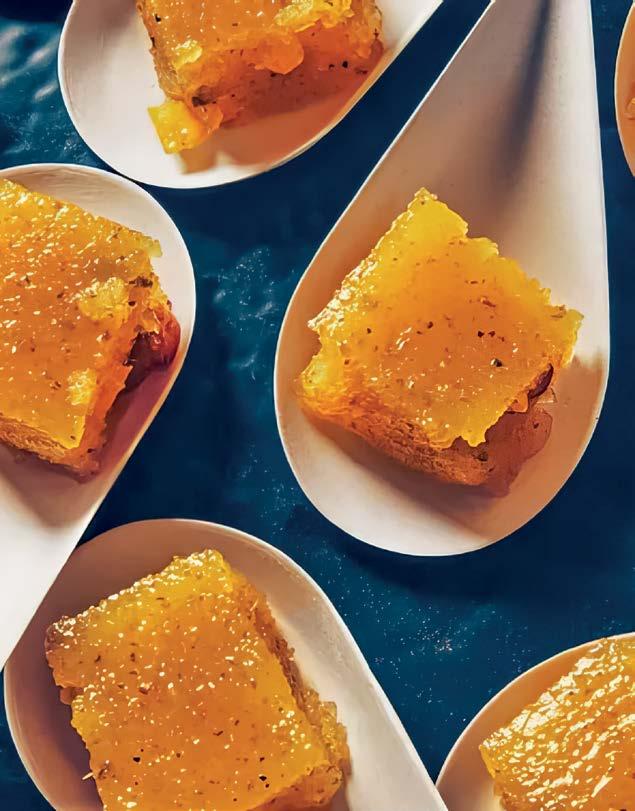
CHEF VIJAY KUMAR’S
This recipe for kesari, a semolina-based, lightly sweetened Indian dessert, is one that was used by Vijay Kumar to make kesari for TV host Padma Lakshmi’s Diwali party.
Kumar’s kesari are infused with saffron and pineapple, a combination that imparts a rich golden color, floral aroma, and balanced acidic and earthy notes. The dessert may look dense, but the creamy, bite-size treat melts in your mouth and is speckled with toasted cashews and raisins for a crunchy and chewy texture. Moreover serving it as delicate squares poised on scoop spoons makes a huge visual difference!
Ingredients
½ cup finely chopped fresh pineapple
7½ tablespoons granulated sugar, divided
2 tablespoons ghee, divided
2 tablespoons raw whole cashews, roughly chopped
2 teaspoons golden raisins
1/8 teaspoon saffron threads, crushed
1½ cups water, divided
½ cup regular (not fine) sooji or rava (semolina)
Cooking spray
1/8 teaspoon fine sea salt
1/8 teaspoon ground cardamom
1. Stir together pineapple and 1½ tablespoons sugar in a small bowl until pineapple releases juices. Let stand at room temperature for 15 minutes.
2. Meanwhile, melt 1½ teaspoons ghee in a medium skillet over medium. Add cashews and raisins, and cook, stirring constantly, until cashews are light golden and raisins are plump, 2 to 3 minutes. Transfer cashew mixture to a small bowl, and set aside. Wipe skillet clean.
3. Stir together saffron and ¼ cup water in a separate small bowl; let bloom 10 minutes. Meanwhile, add 1 tablespoon ghee to cleaned skillet, and melt over medium heat. Add sooji; cook, stirring constantly, until fragrant and toasted, 5 to 7 minutes. Remove from heat; scrape mixture into a small bowl.
4. Lightly coat an 8-inch square baking pan with cooking spray. Line pan with plastic wrap, leaving a 2-inch overhang on all sides. Set aside.
5. Pour saffron mixture into a small saucepan; add remaining 6 tablespoons sugar and remaining 1¼ cups water. Bring mixture to a boil over medium heat, stirring occasionally to dissolve sugar. Stir in pineapple mixture. Return to a boil over medium. Boil pineapple mixture, undisturbed, 30 seconds. Stir in salt. Reduce heat to low.
6. Stir in toasted sooji; cook, stirring constantly, until water is fully absorbed and mixture is very thick, 1 to 2 minutes. Stir in cardamom, cashew mixture, and remaining 1½ teaspoons ghee. Remove from heat.
7. Spread sooji mixture evenly in prepared pan. Place another piece of plastic wrap directly on surface, and press mixture to form a flat, even layer. Refrigerate until firm, about 1 hour.
8. Remove and discard top piece of plastic wrap; invert kesari onto a clean work surface. Unwrap kesari, and discard plastic wrap. Cut into 1-inch squares. Arrange on a platter, and serve.

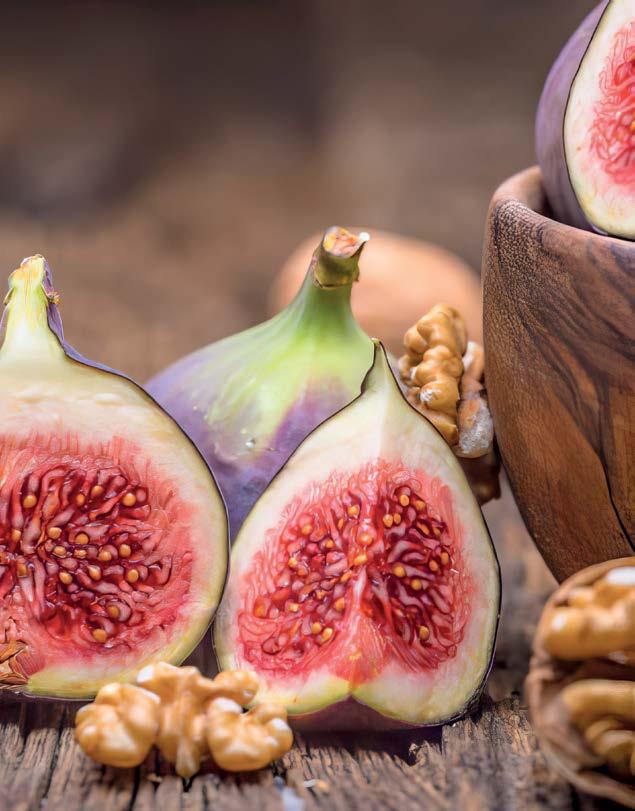
CHEF JOMON KURIAKOSE’S
Dry fig 1 kg (soak in water for 15 minutes)
Dry fig 300 gm (minced) - to stir fry and add as garnish
Cashew nuts 150 gm
Ghee 100 gm
Condensed milk 500 ml
Cumin 30 gm
Dry ginger (chukku) 15 gm
Milk as needed
Jaggery as needed
Preparation
1. Boil milk and add condensed milk, cumin and dry ginger
2. To prepare payasam
3. Crush and mash dry figs in a bowl and add sugar. Mix well until it forms a thick syrup.
4. Now add crushed jaggery chunks and let it simmer.
5. Pour coconut milk.
6. Add the already prepared pradhaman to the vessel and let it boil.
7. Add ghee and minced dry figs. Stir for 3 minutes and turn off the stove.
8. Serve hot.










India has been the muse for international fashion this year – whether it was the unexpected recognition for the Kolhapuri chappals on the Prada catwalk or the outright embracing of India by Louis Vuitton in its Spring 2026 collection. The French fashion leader’s menswear show in Paris highlighted Indian culture, not just as a prop but by embracing India across all key elements: architect Bijoy Jain’s runway sets drew inspiration from the legendary snake and ladder artwork - a game that has been a beloved part of Indian childhoods for decades – and was brought to life on a grand scale for this international stage and Oscar-winning composer A.R. Rahman’s unreleased Punjabi track ‘ Yaara ’, which premiered alongside Pharrell Williams’ runway soundtrack.

All in all, men are certainly having their moment on the fashion stage and if Paris chose to highlight men, can Lakme Fashion Week be far behind? This year, the Mumbai show celebrated its quarter-century mark with a long and creative look at menswear. The collections sought to rewrite menswear playbook. proving tailoring is far from predictable. There was flow, glamour, intricate detailing (check out Shantanu & Nikhil's collection for the bandhgalas styled with shirts and ties, and waistcoats designed like jackets or Rahul Mishra’s handwoven textures, hand embroidered leitmotifs, and tapered trousers)
The show stage itself spoke of a confident and emerging India, unafraid to embrace a global appeal in lieu of the Indian design tropes – futuristic designs of the backdrop as well as the clothes, and an ever-evolving fashion narrative.

Abhishek Shinde's "Ciao"
This collection, inspired by Sicily, featured handwoven fabrics, hand-block printed and embroidered motifs, and bold stripes, creating a blend of rustic and contemporary styles, according to Justdial.
Falguni Shane Peacock
Showcased Karan Johar in a black ensemble with rose details, and Ibrahim Ali Khan in a beige suit, demonstrating suave and modern aesthetics.
Shantnu & Nikhil
Focused on bandhgalas, waistcoats, and mix-and-match styling, with a color palette featuring pastel pinks and deep hues.
Emphasis on accessories
Accessories played a crucial role in adding a touch of refinement and individuality to each look.
Americana with a Tailored Edge
Trends included blue slim fit jeans, loosefit jeans with logo detailing, and relaxed black jeans.
European Flair
The color palette incorporated European influences, with a focus on pastel pinks and deep hues.

aOur Himesh Reshamiyya has quietly overturned the charts - he has surprised the world by becoming the only Indian singer to be named on the Bloomberg Pop Power List. That’s as surprising as SRK winning the National Award for Jawan but wait a minute: Himesh is up there at No.22 and joins giants like Beyonce, Post Malone, Lady Gaga and Coldplay.
The ranking of the pop stars is based on seven data-driven performance metrics - revenues and ticket sales from recent live shows, album and digital song sales, and YouTube views and approximately 120,000 people took part.
No hit or miss this!

aWe’re talking, of course of the beauteous Mrunal Thakur and the powerful Dhanush. Days after her video with Dhanush from the special screening of her film Son of Sardaar 2 in Mumbai went viral, comes news that Mrunal the National Award-winning actor's sisters, Dr Karthika Kartik and Vimala Geetha, on Instagram.
Social media miners then also discovered that Dhanush attended Mrunal Thakur's birthday party on August 1. Last month, Mrunal Thakur attended a party hosted by writerproducer Kanika Dhillon for Dhanush's upcoming film Tere Ishk Mein.
According to the couple’s inner circle, Mrunal Thakur's increasing footprint in South cinema played a role in bringing her and Dhanush closer. "Yes, it's true that they are dating. But it's too new and they've no plans of making their relationship official before the public or the media. At the same time, they're unfazed about going out and about and being spotted. Friends are truly rooting for them as they're quite similar and compatible when it comes to their values, choices and thoughts," the insider added.

aBoy, that Kajol is a diva alright. After being celebrated and fawned over by millions of fans the world over for her Hindi movie hits, the actress was rightly feted for her contribution to Indian cinema at the Maharashtra State Film Awards 2025. She was selected as recipient of the prestigious Raj Kapoor Award.
After the award ceremony, at which she made her acceptance speech in fluent Marathi, Kajol continued to address reporters too in the same language and called the award a "big deal."
However, when a reporter requested her to repeat her statement in Hindi, the actor appeared visibly irritated. In the video, she’s heard saying, "Abhi main Hindi mein bolu (Now should I speak in Hindi too)?" She added, "Jisko samjhna hai woh samjh lenge (Those who want to understand what I said, will figure it out)."
Oops. Has our Marathi mulgi waded into the Marathi First language drama of the state government? Okay, we understand that you have to be loyal to the government which awards you. But Kajol dear, you won your fame and considerable fortune, not because of Marathi cinema but through Hindi films. So, show some respect to reporters asking you to speak in Hindi!
Needless to say the actress turned a moment of triumph into PR disaster and was savagely trolled on the ‘net.
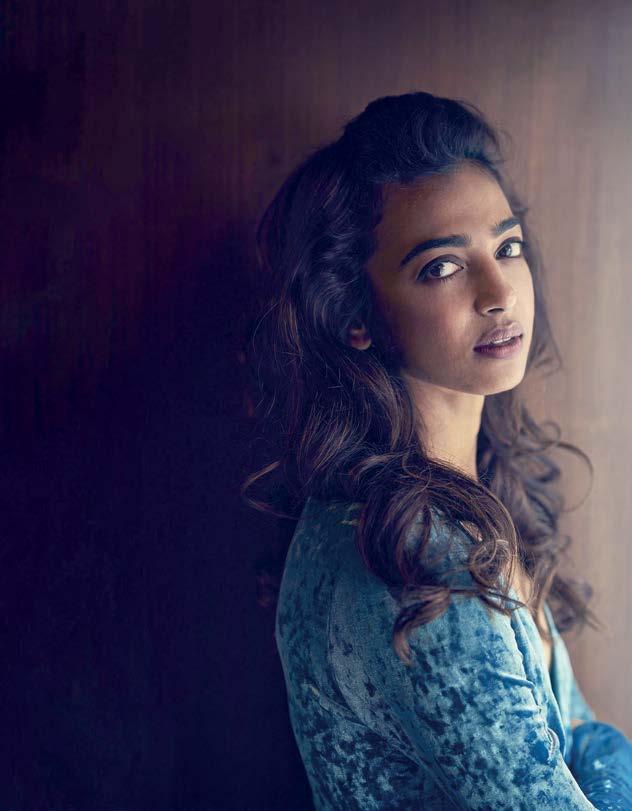
You think Deepika Padukone had it rough for asking that she work an eight-hour day after the birth of Baby Dua? Actress Radhika Apte says misogyny is so entrenched in the industry that actresses who get pregnant are scorned and made to feel they have committed a big mistake.
In October 2024, Radhika and musician-husband Benedict Taylor announced their pregnancy. Even though she continued her professional commitments, she says people in the Hindi film industry, especially producers, were insensitive.
"An Indian producer I was working with wasn't happy about the news," she said, "He responded coldly and even insisted I wear tight-fitting clothes despite my discomfort and bloating. I was in my first trimester and had constant cravings, I was eating a lot, be it rice or pasta and going through the usual physical changes, but instead of understanding, I was met with insensitivity."
She added, "I wasn't even allowed to see a doctor when I was in pain and feeling uneasy on set. That truly disheartened me. I wasn't expecting special treatment, just kindness and basic humanity after sharing such a personal and joyous piece of news.”
In contrast, she says the filmmaker on a Hollywood set that she was working on showed support and warmth.
"(He) was so supportive. When I mentioned I was eating more than usual and might look like a completely different person by the end of the shoot, he laughed and said, 'Don't worry, even if you're another person by the end of this project, it's fine. Because you're pregnant.' “
As the world dances and hums to the discovery of India-Western collabs in music (think Arijit Singh and Ed Sheeran or Diljit Dosanjh and Pitbull), we must remember that it all started much earlier – and no, we’re not talking of borrowed tunes. Sonu Nigam too has worked with international names such as Britney Spears (2011) and Avicii (2012) but despite the melody and the magic, it was too early for cultural crossovers and he was dismissed as “the guy who keeps popping up in Brittney’s video”.
It must have hurt at that time but today, Sonu shrugs it off.
“Back then India wasn’t open to it. There was resistance from both sides,” he says, “But now things have changed and we’re celebrating these crossovers.”
Hmm..we smell a new international big-name collab, eh Sonu?

AUGUST 2025
THE EDITORIAL TEAM
P.O. Box 50650, Arad Kingdom of Bahrain
Published by Al Ayam Media Group
Licensed by The Ministry of Information, Publication Licence No. GASB740
Chairman Najeeb Al Hamer
Managing Editor Mahmood AlMahmood
Managing Director
P.K. Ravi
Editor Meera Ravi
Promoted by Ajyal Consultations w.l.l
Marketing P.R.M. Marketing Consultancy w.l.l
Design Madhu Sarda Creatives
Contributors
Hina Asar
Photography
Sanuraj S., Hussain - Salmaniya Studio Sajid Butt
Videography Ansari
Advertising Sales Contact: +973 3668 4011 advts.sb@gmail.com
Advertising / Editorial / Circulation Enquiries +973 3668 4011
e-mail salaam.bahrain@gmail.com advts.sb@gmail.com
Copyright Reserved. All Rights Reserved.
No part of this publication may be reproduced without the written permission of the publisher.
The views expressed in this magazine are not necessarily the views of the publisher and Editor. While every effort has been made to ensure the accuracy of the information contained in this publication, the publisher & editor cannot accept legal responsibility for any error, content or omissions. we speak

Indians have the luxury of not one but two national occasions to review their progress – the January 26 Republic Day helps to set the road map for the year ahead while the August 15 Independence Day is a mid-year reckoner of progress made, promises kept and course-correction. Even the celebrations are different – with its cooler climate, January allows us the luxury of elaborate ceremonials led by the President and a grand military display, whereas, fiery August calls for a patriotic flag-hoisting at the Red Fort by the Prime Minister and a cultural parade that emphasizes national unity and not so much India’s military strength.
And it’s the same in most parts of the world where the Indian diaspora is present – which is, indeed, everywhere! We are a people who are from a vast country ourselves but are happy to traverse the length and breadth of the world in search of new opportunities. And while we serve the ‘karma bhoomi’, the land we work in, our hearts beat for our ‘janma bhoomi’, the land of our birth. We hold fast the bonds of nationalism through our cultural identity, through our spiritual practices and by teaching our children their mother tongue even as they think and dream in English, the language bestowed upon us by our former colonial rulers. We start clubs where we can socialize and celebrate that irresistible ‘back home’ feeling.
And while we build our own small universes far from home, our homeland gallops ahead at breakneck speed. You go back home and the India you left in the ‘seventies and ‘eighties has vanished and you are stranded in a world seemingly peopled by a brash new generation. Your friends and your own generation have been relegated to being mere tropes in the unfolding drama of our country’s growth.
These days, of course, modern transportation makes it possible even for the diaspora in faraway countries to come home more frequently than before, in the Gulf, where we are a mere three or four hours away, the connection runs deeper and visits are more regular. And that sense of cultural isolation that was a companion for the early expats is not there anymore because of video calls and the internet.
All this means we have the ability and the knowledge to be more active participants in our home country’s growth, the shaping of its future. Our roles do not end with just sending foreign exchange home. We have to carve out a bigger role, have a louder voice in our national development. Don’t let those back home troll us about why we left if we care so much. It should matter that we care enough to stay connected.
As the tricolour unfurls against the bright Bahrain sky on August 15, think beyond that patriotic lump in your throat and let’s plan how we can play a part in uniting India and Bahrain fruitfully. Just by giving our best to Bahrain in our chosen paths and by staying abreast of India’s journey, we can find ways to link the two.

